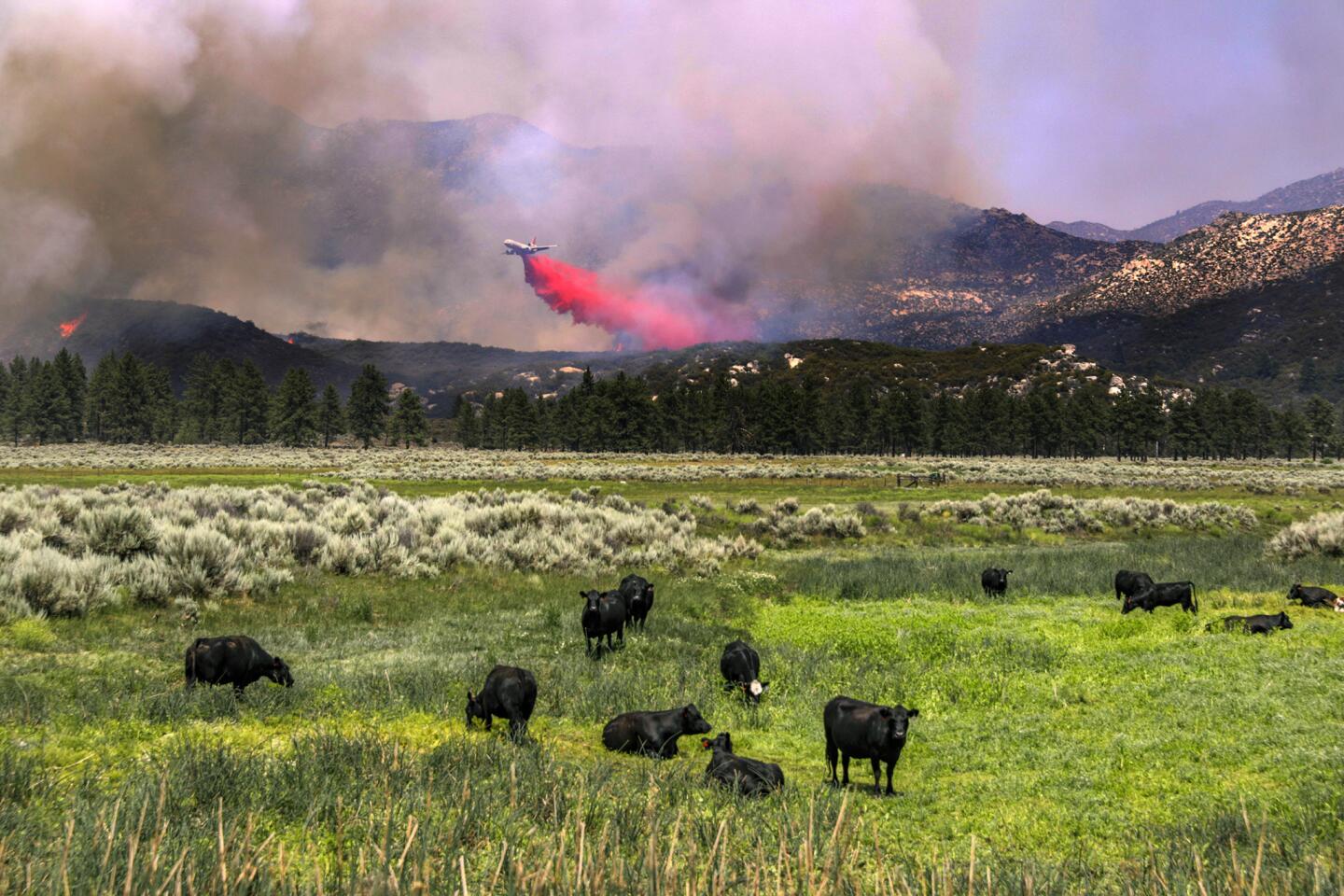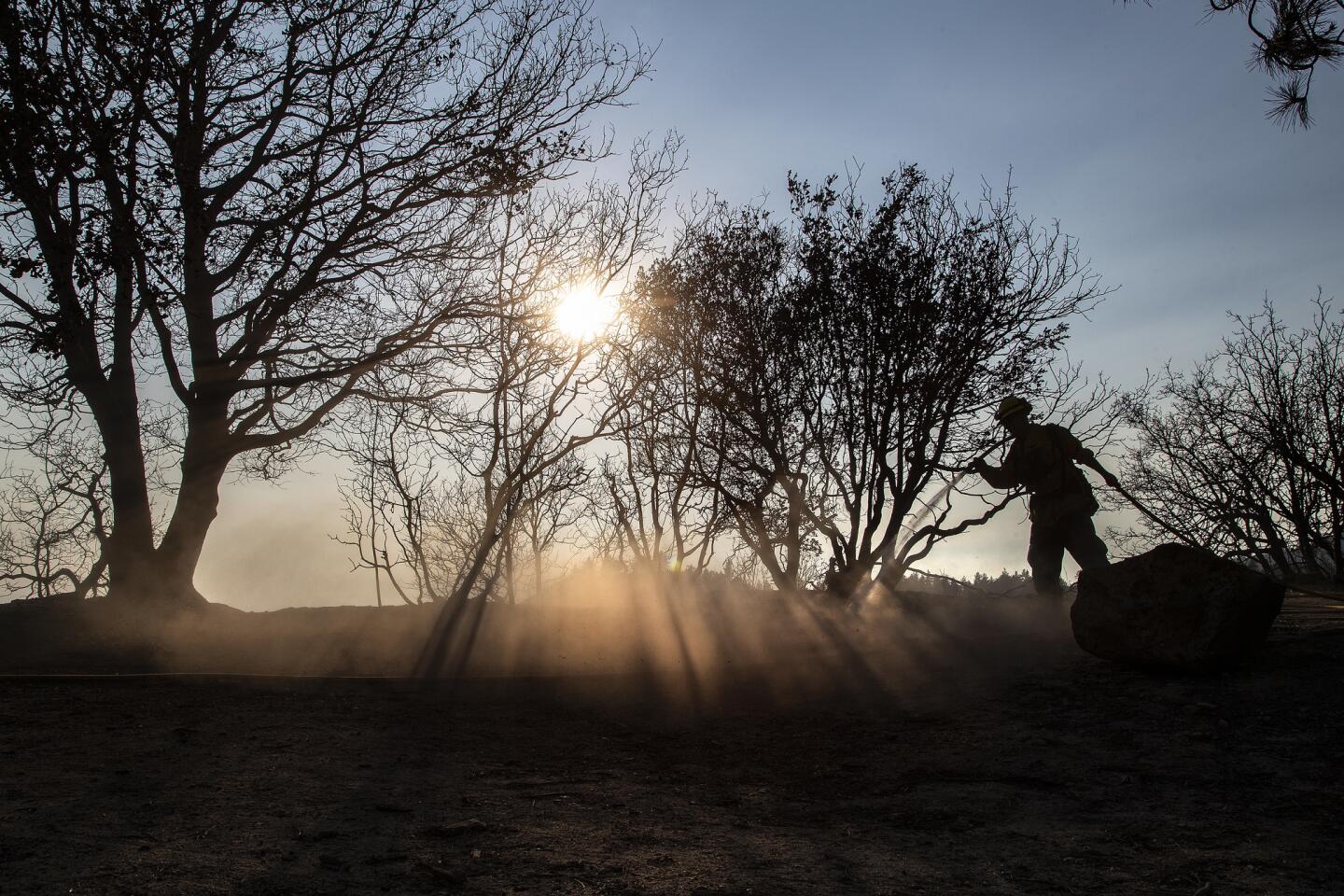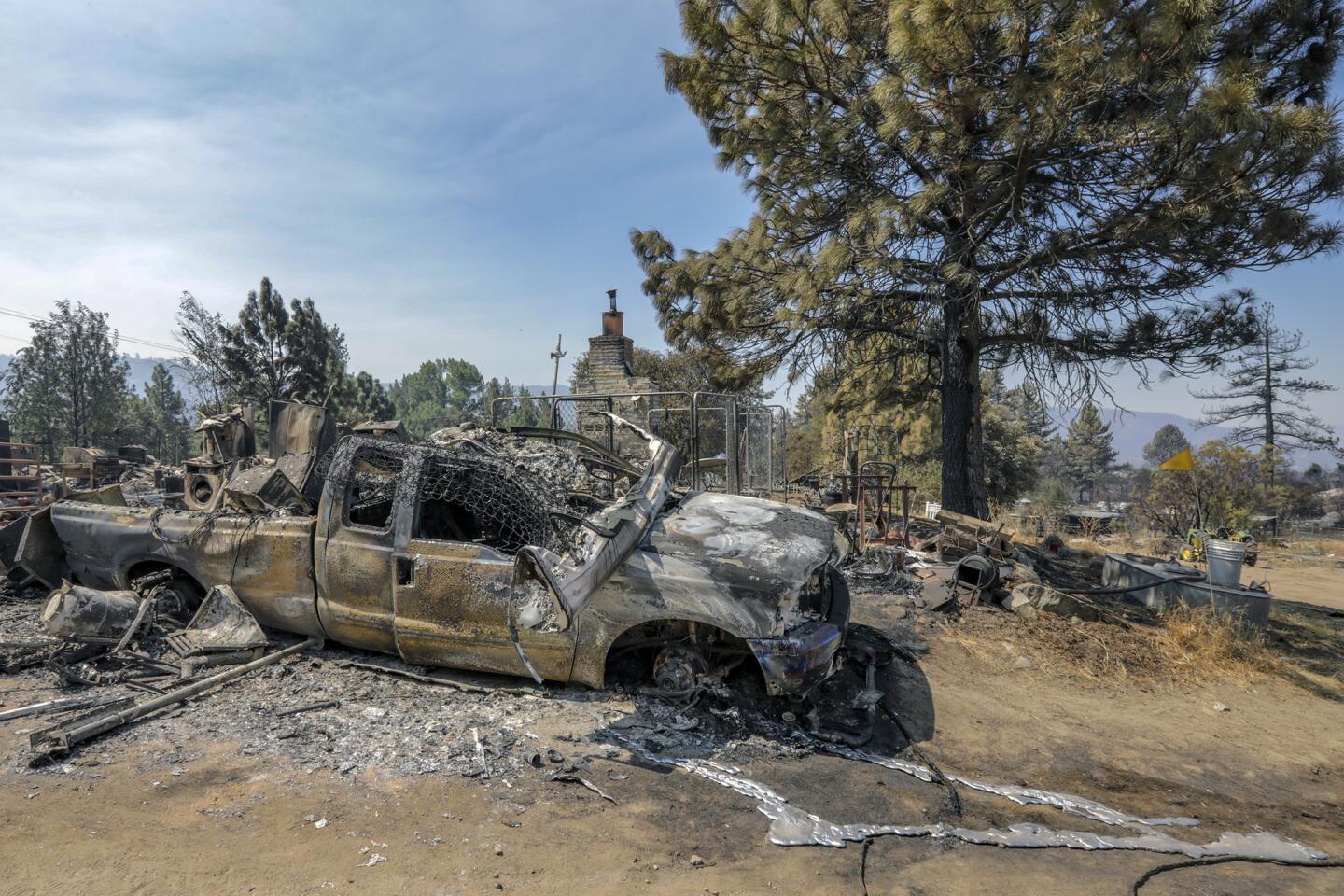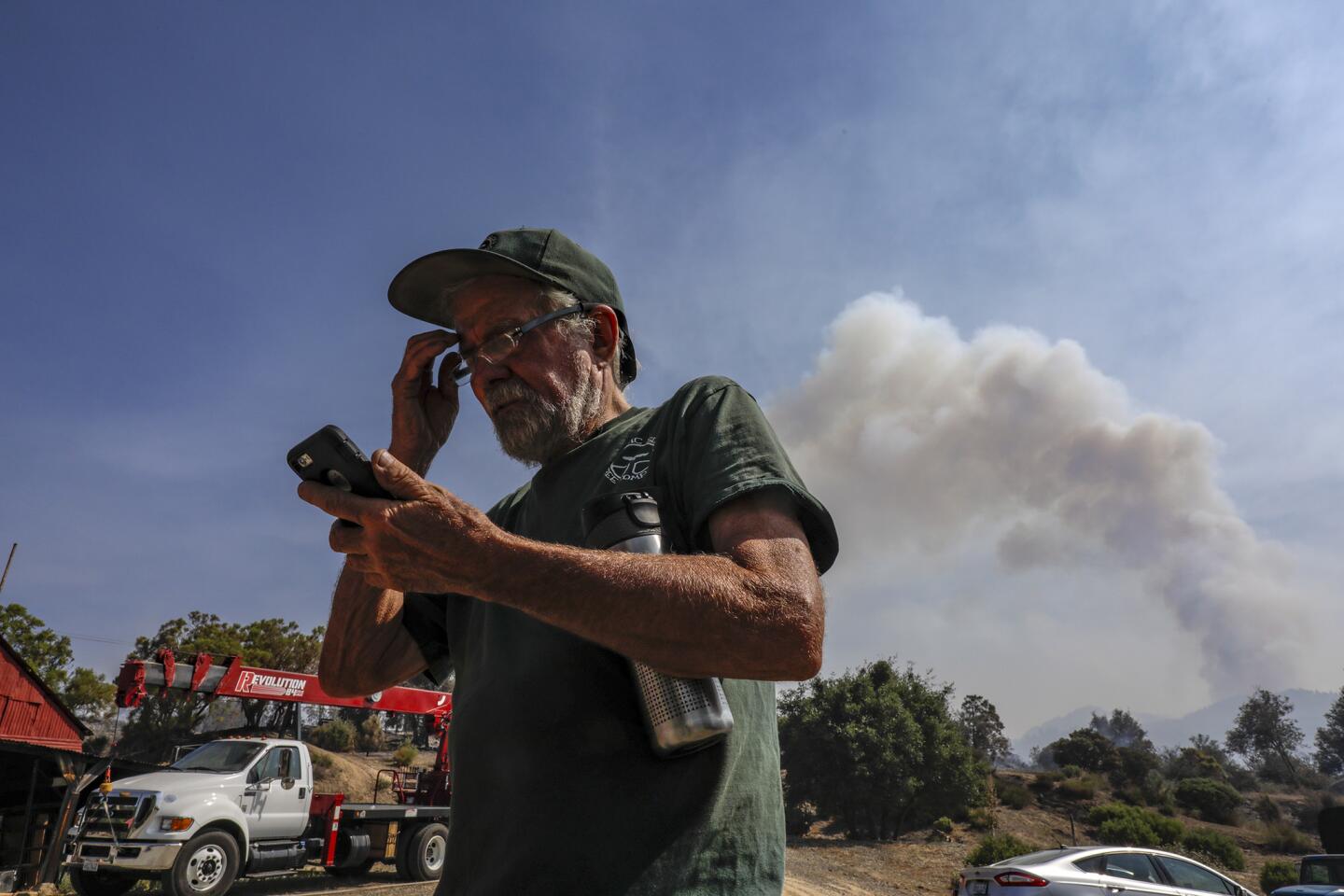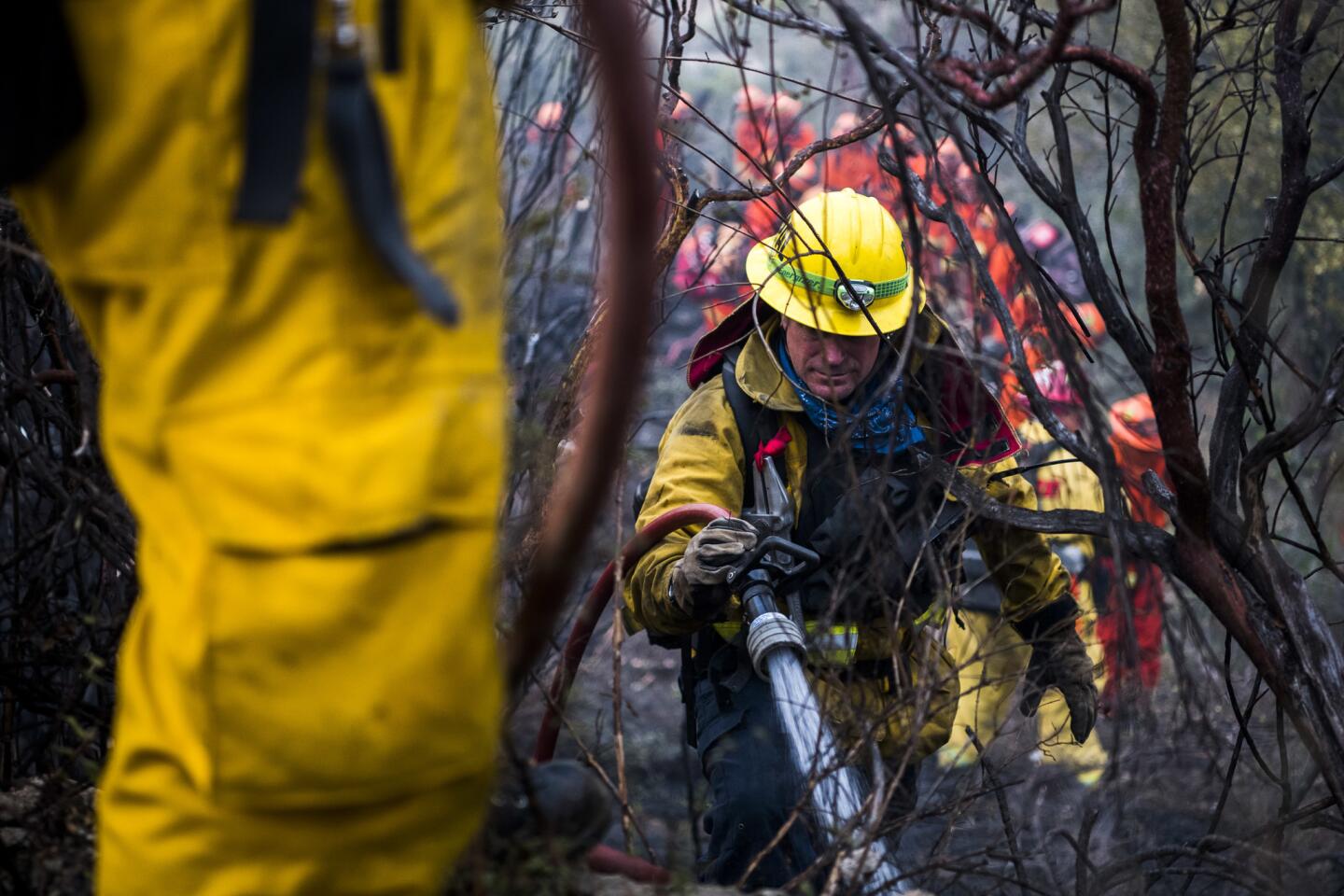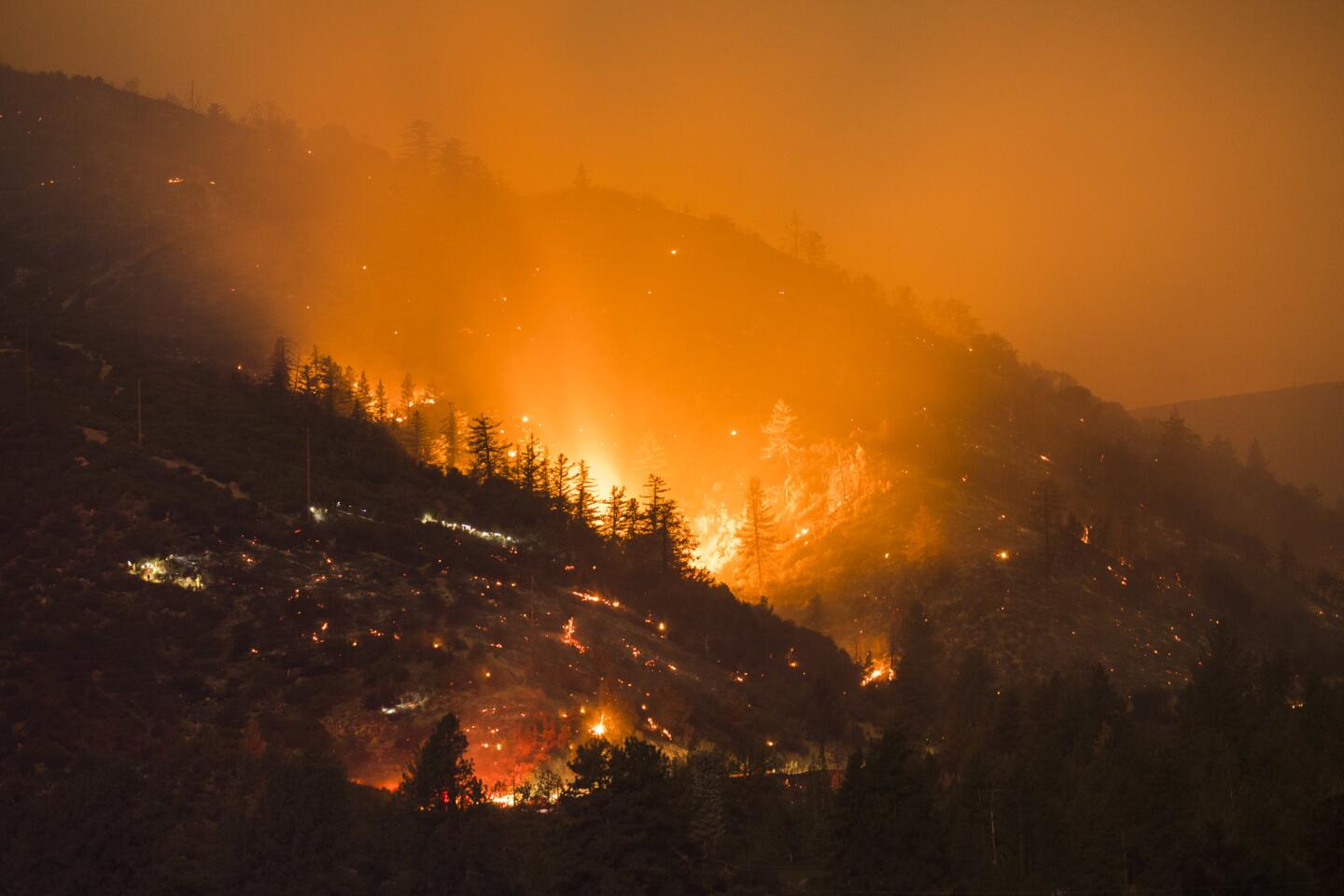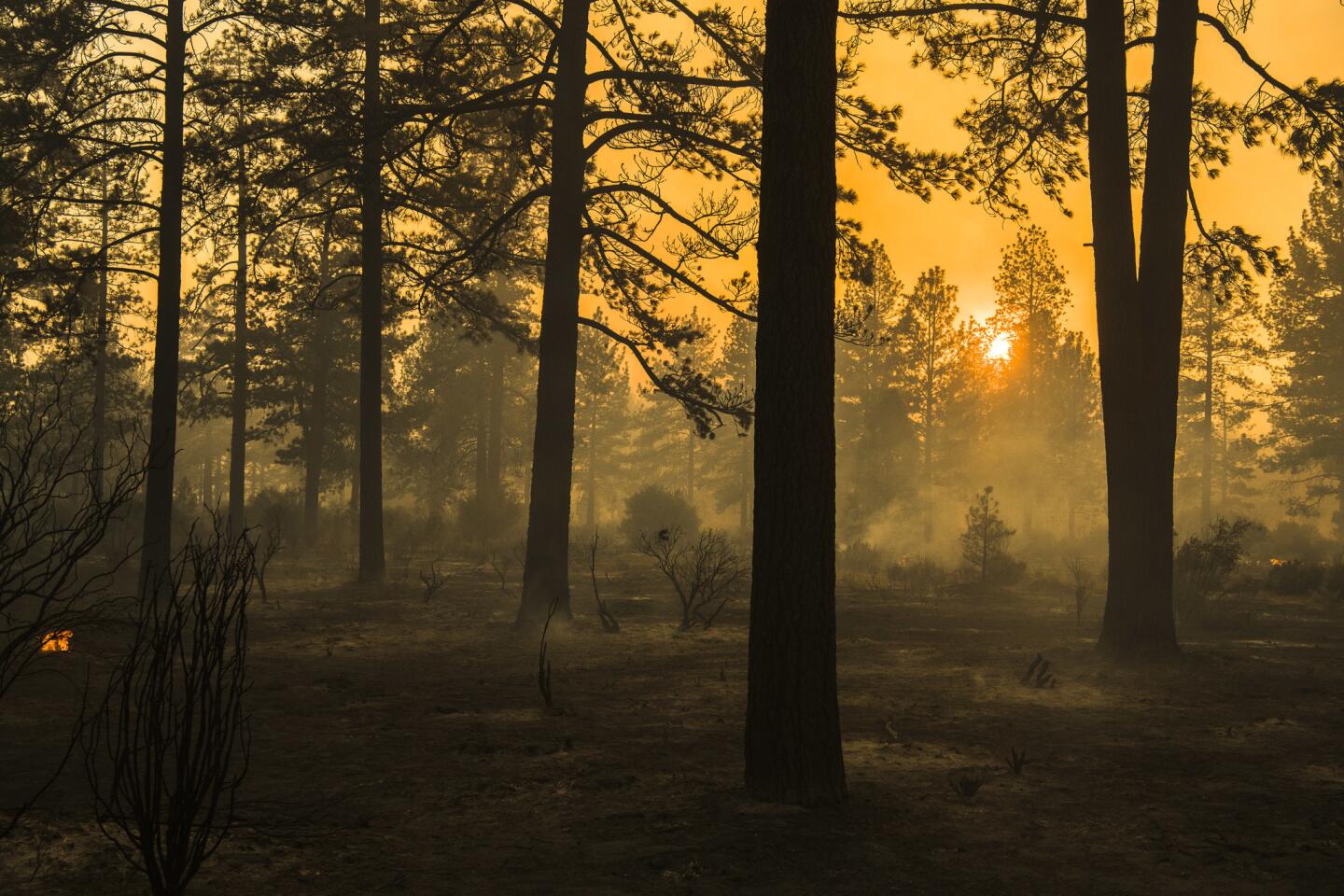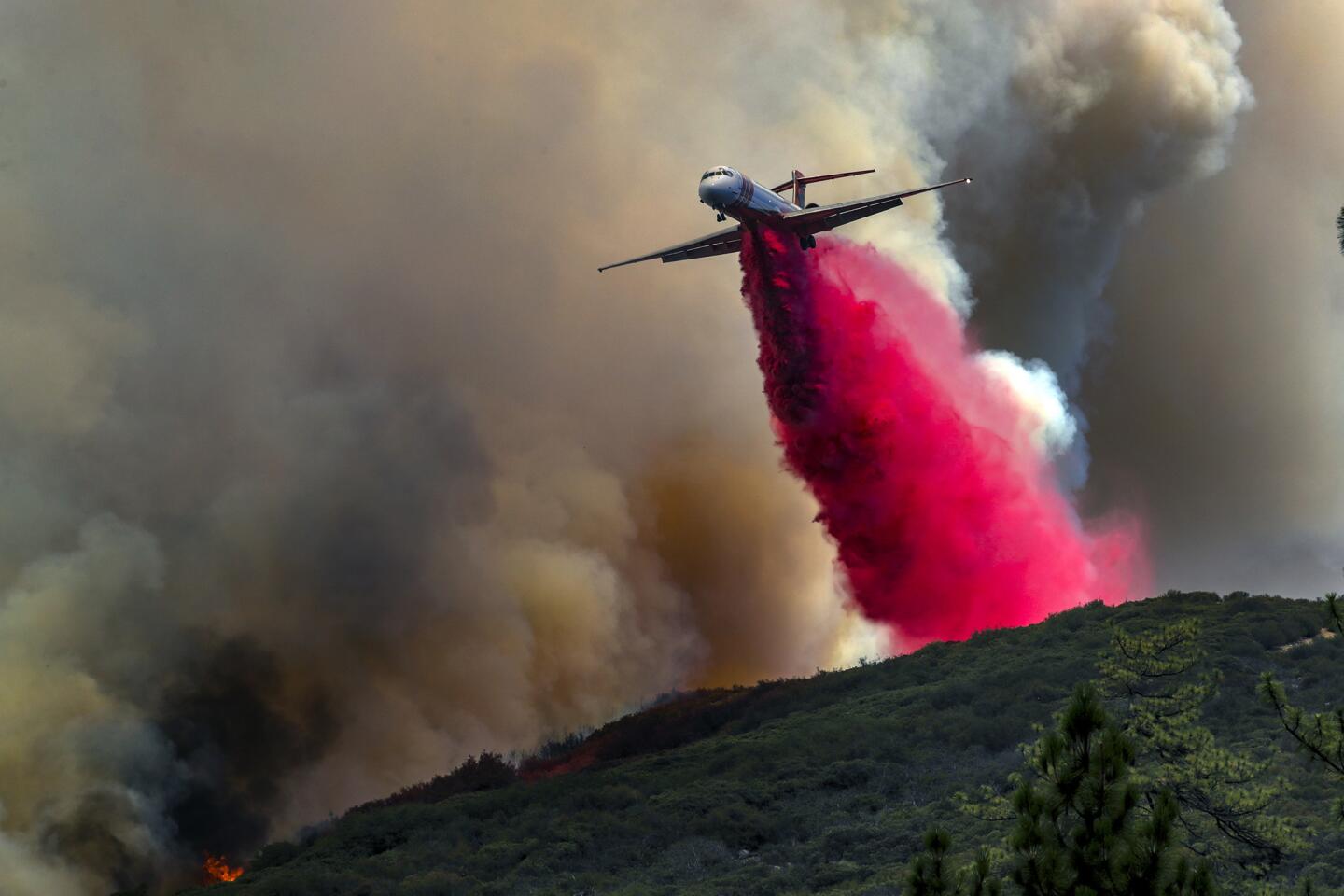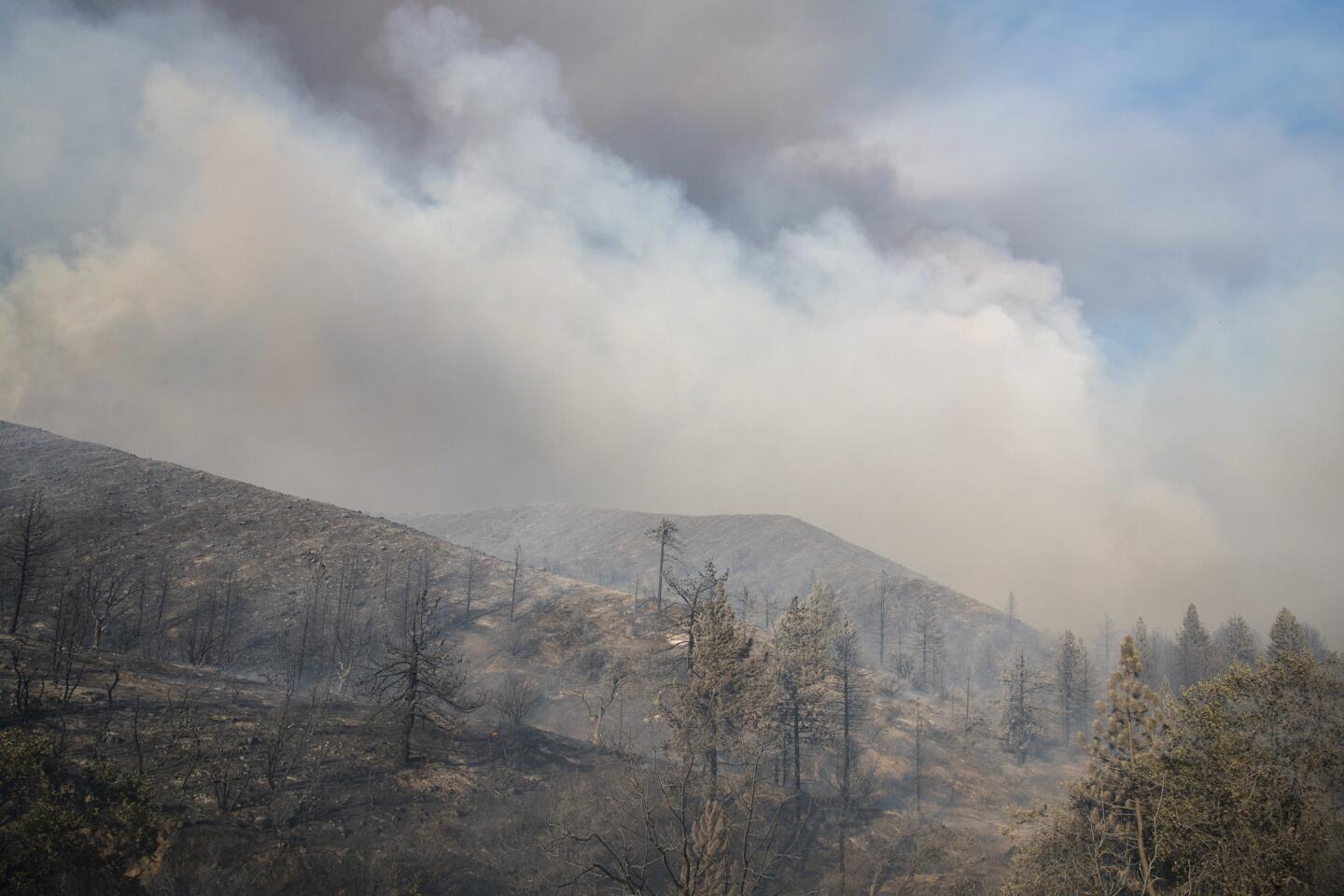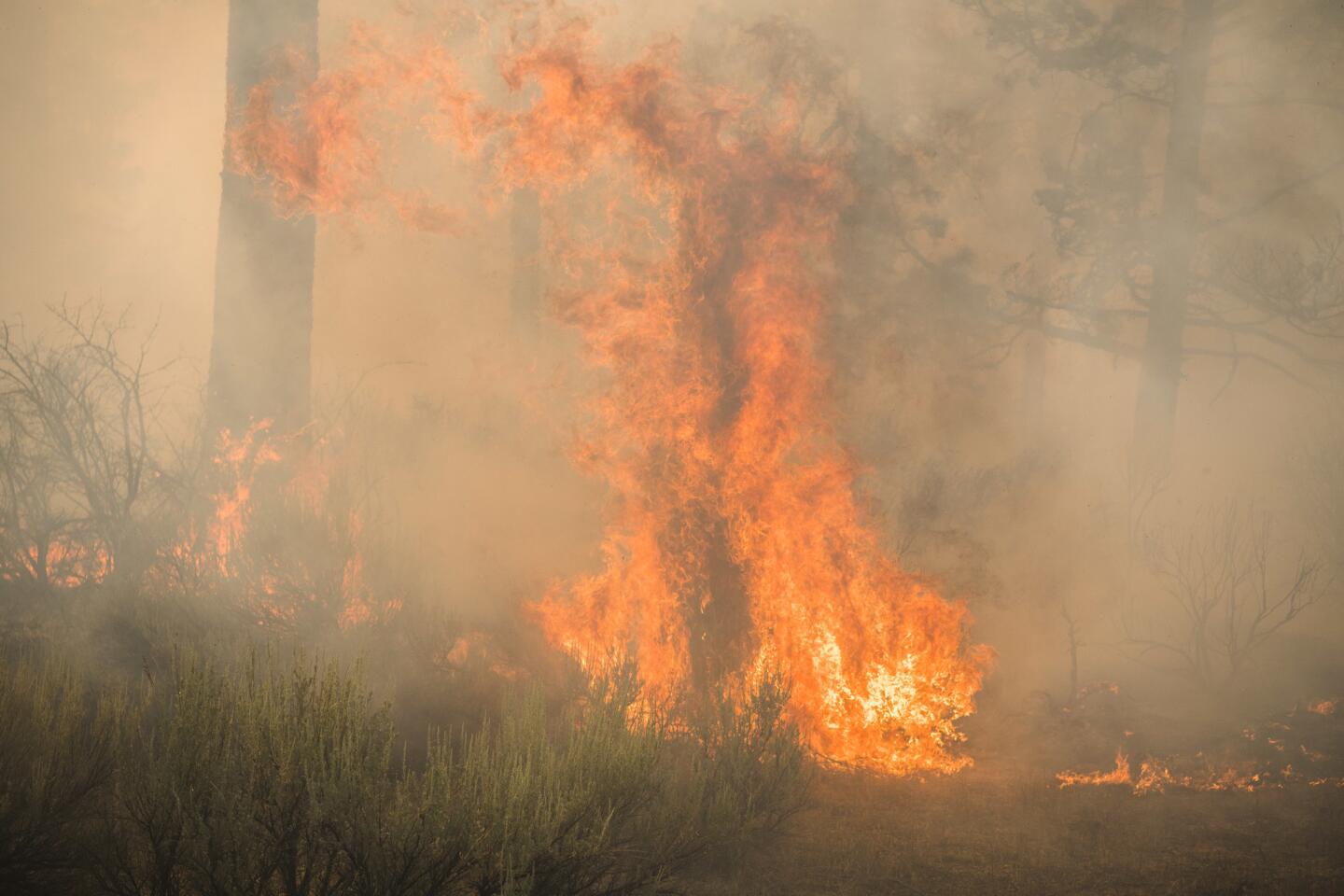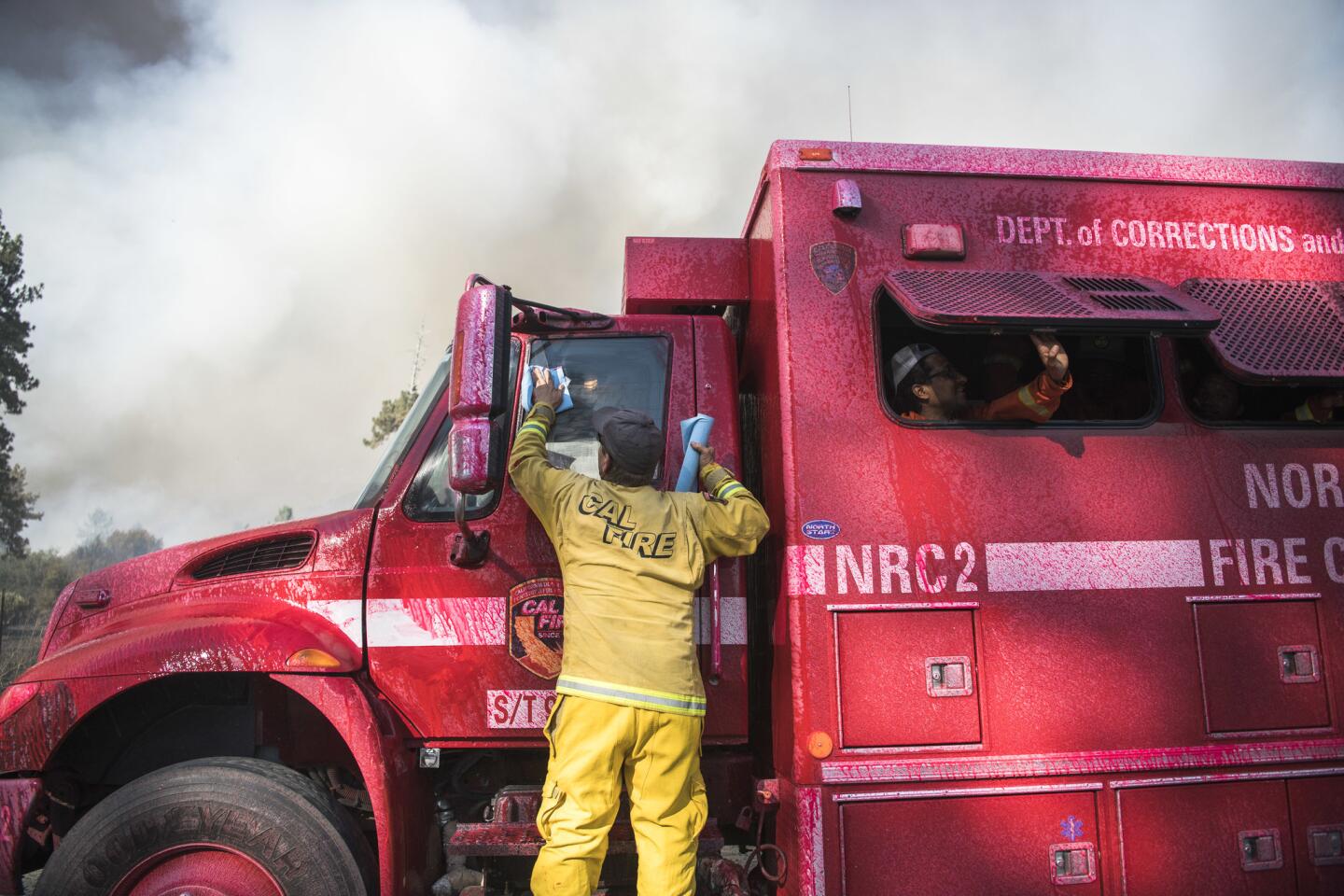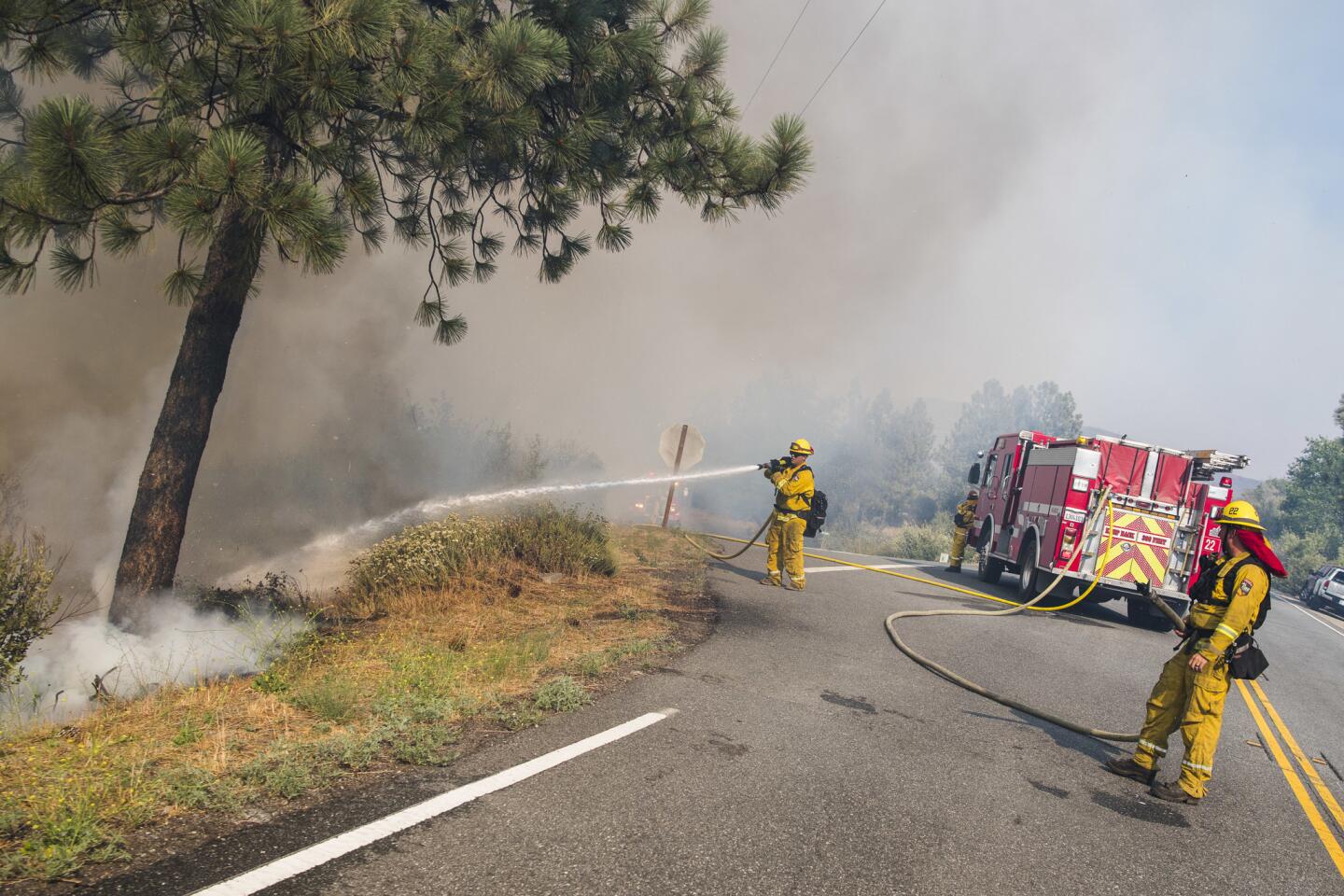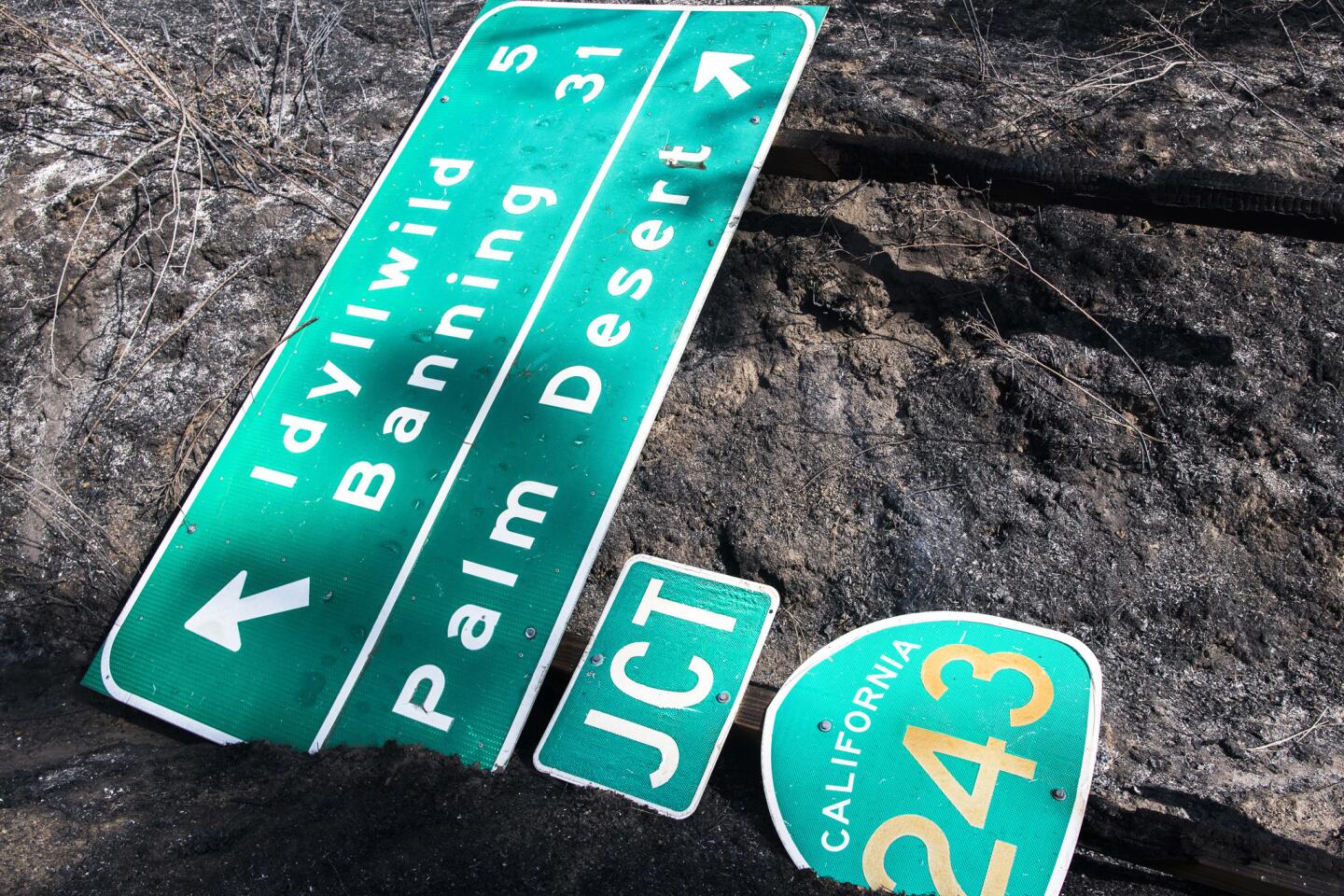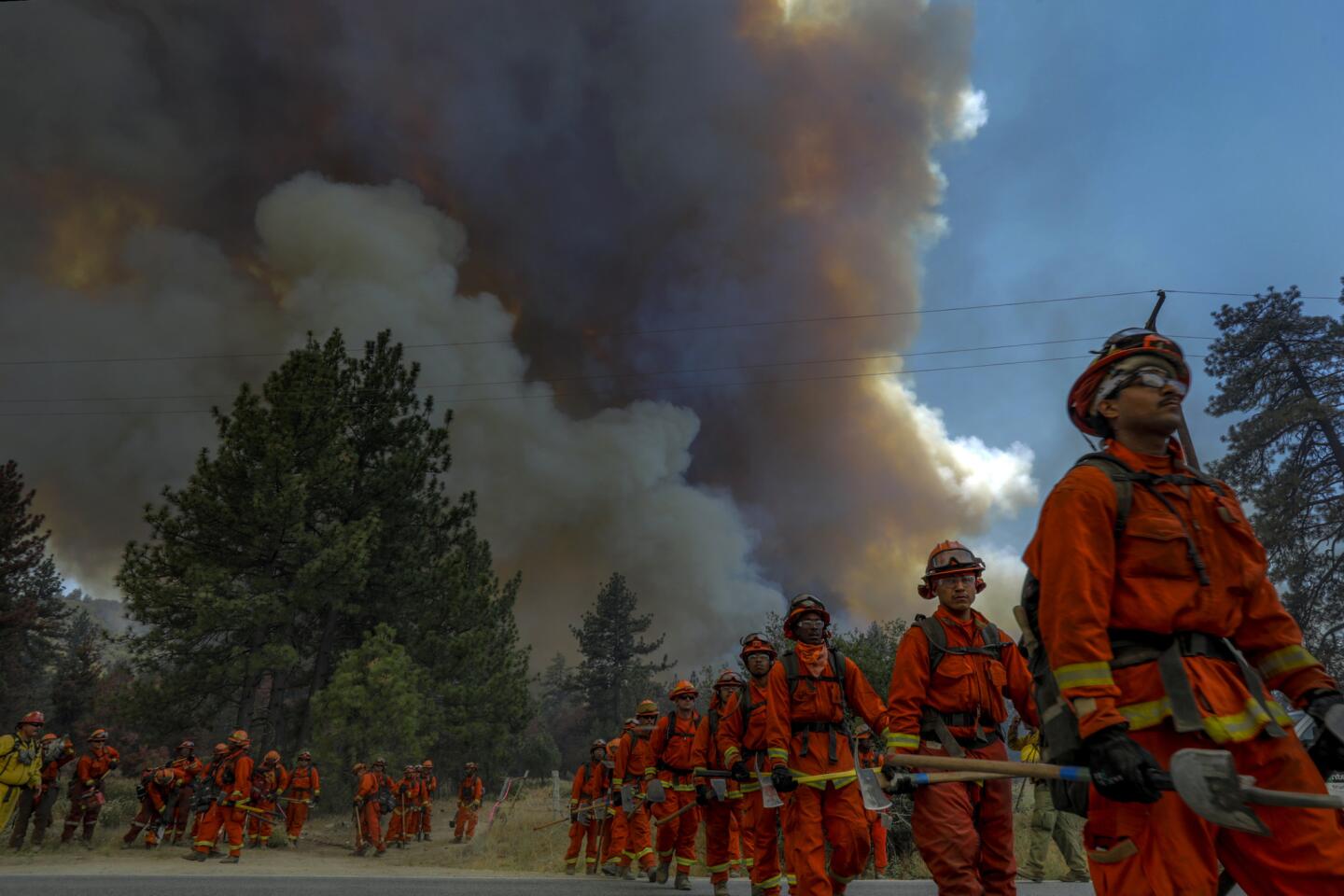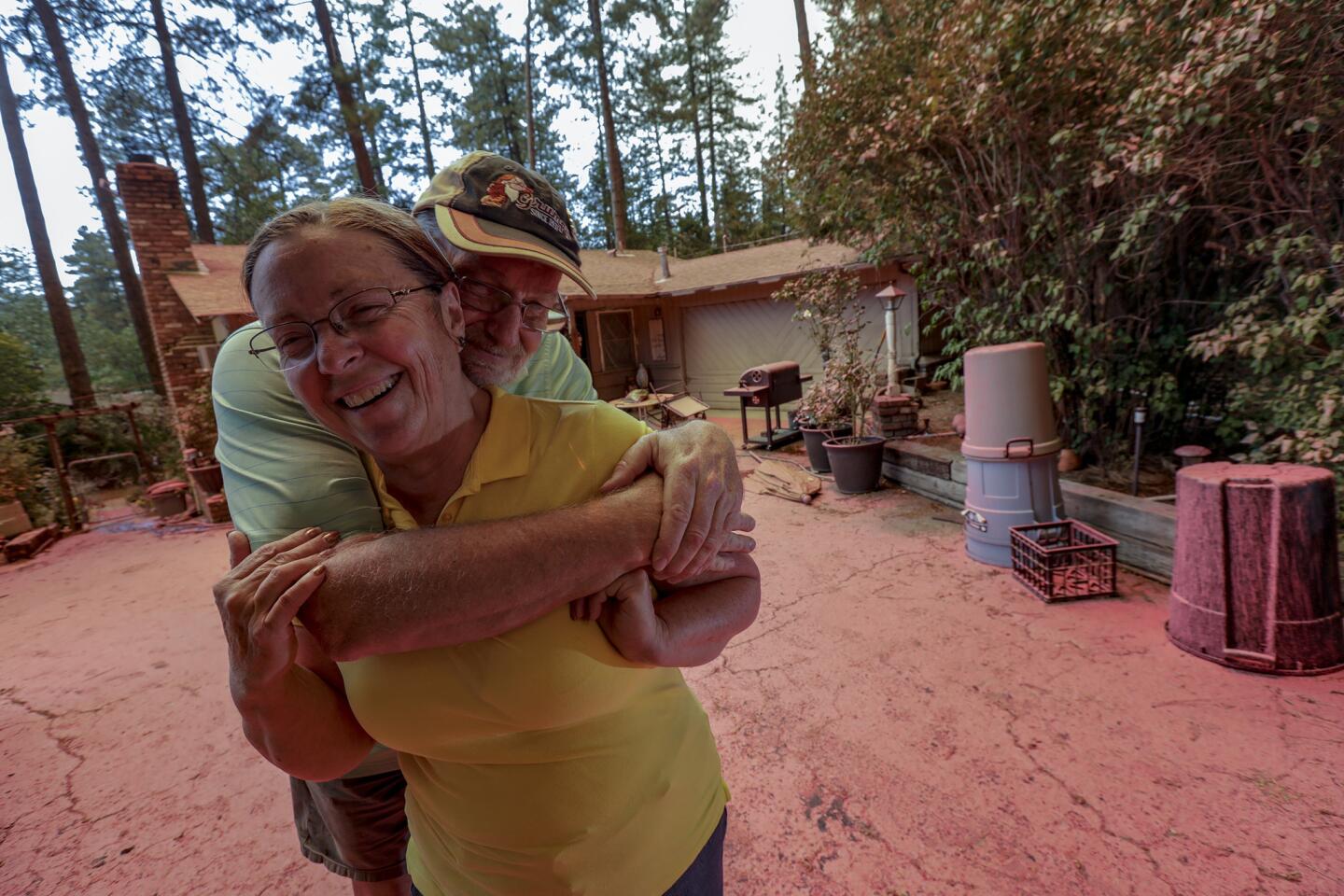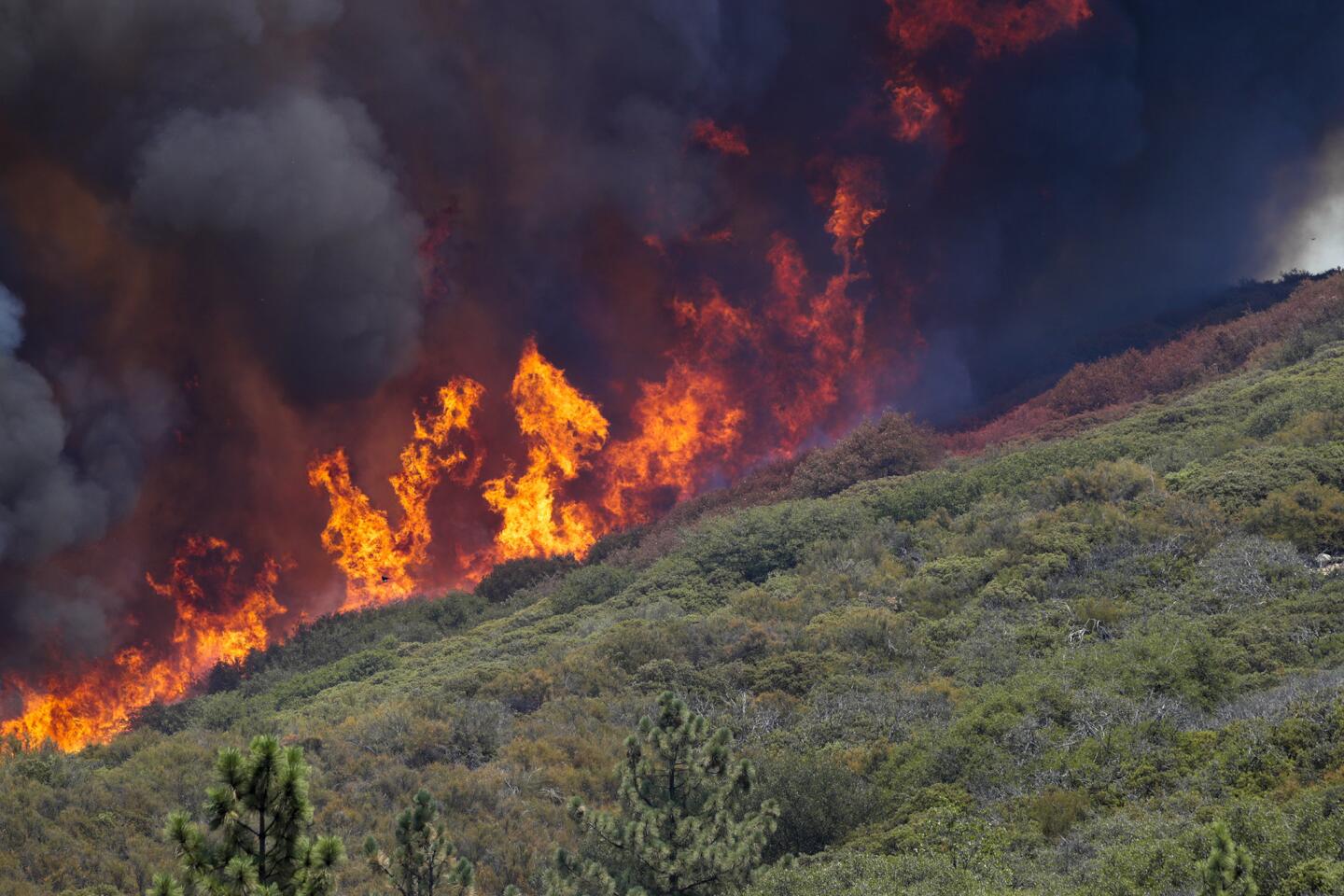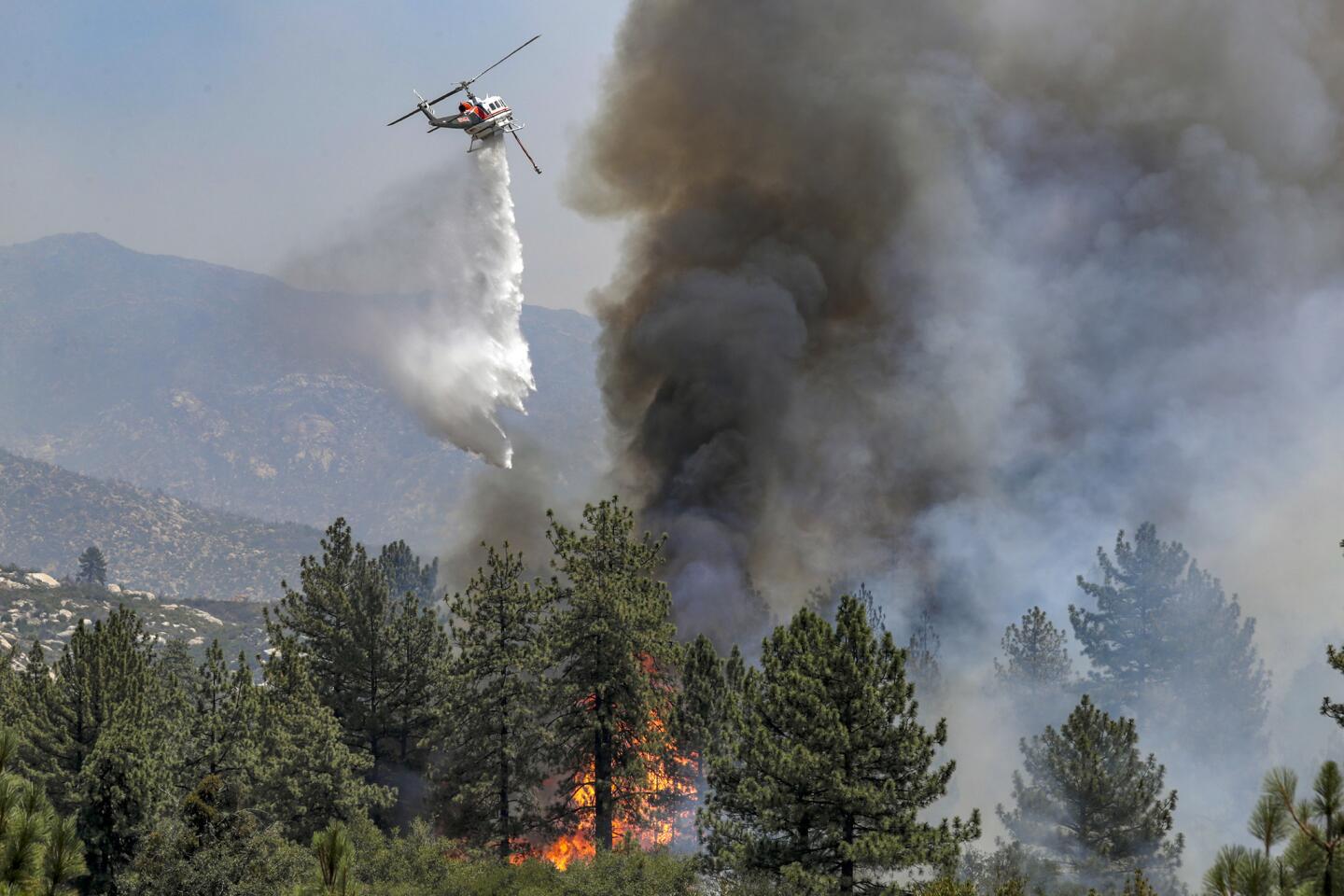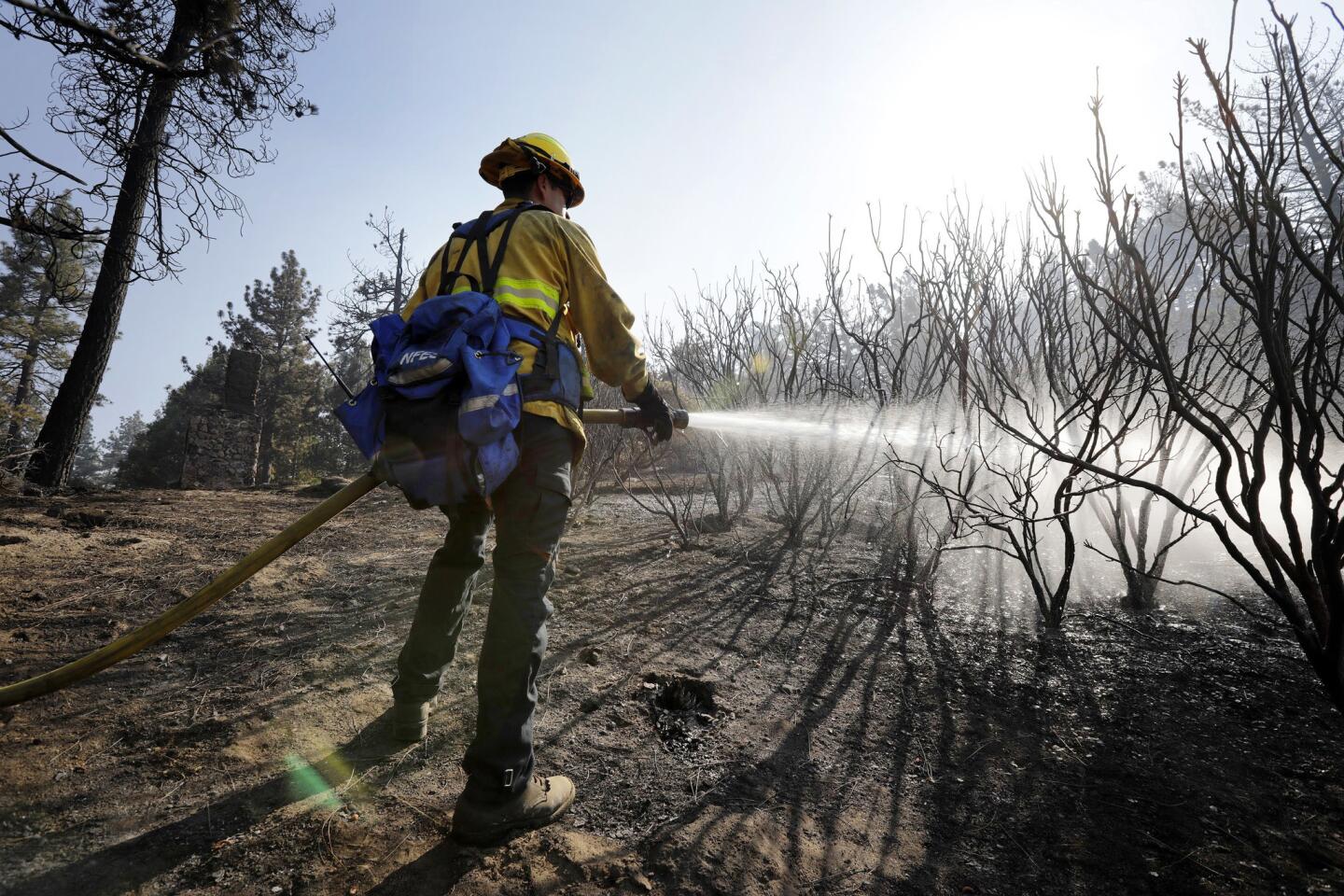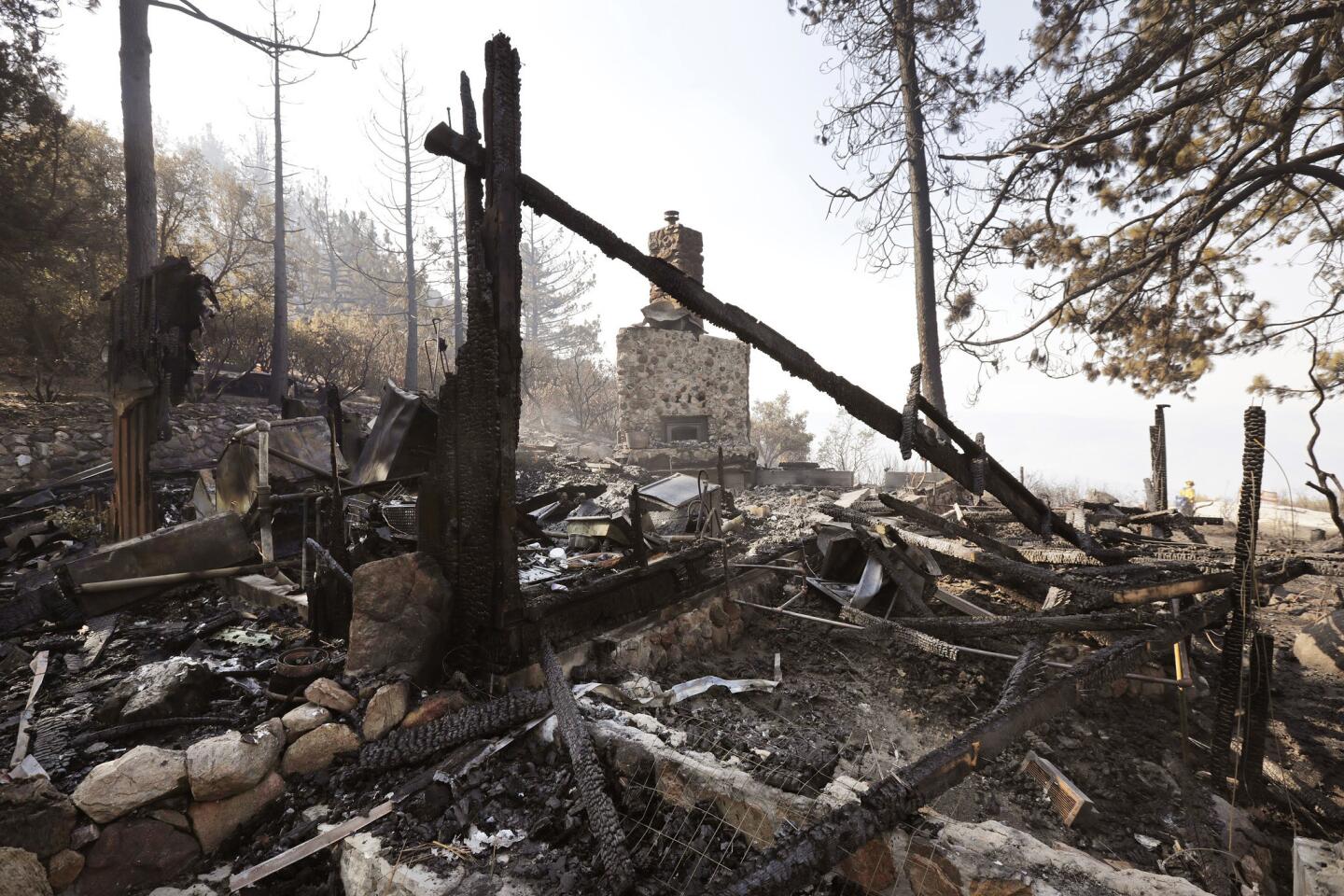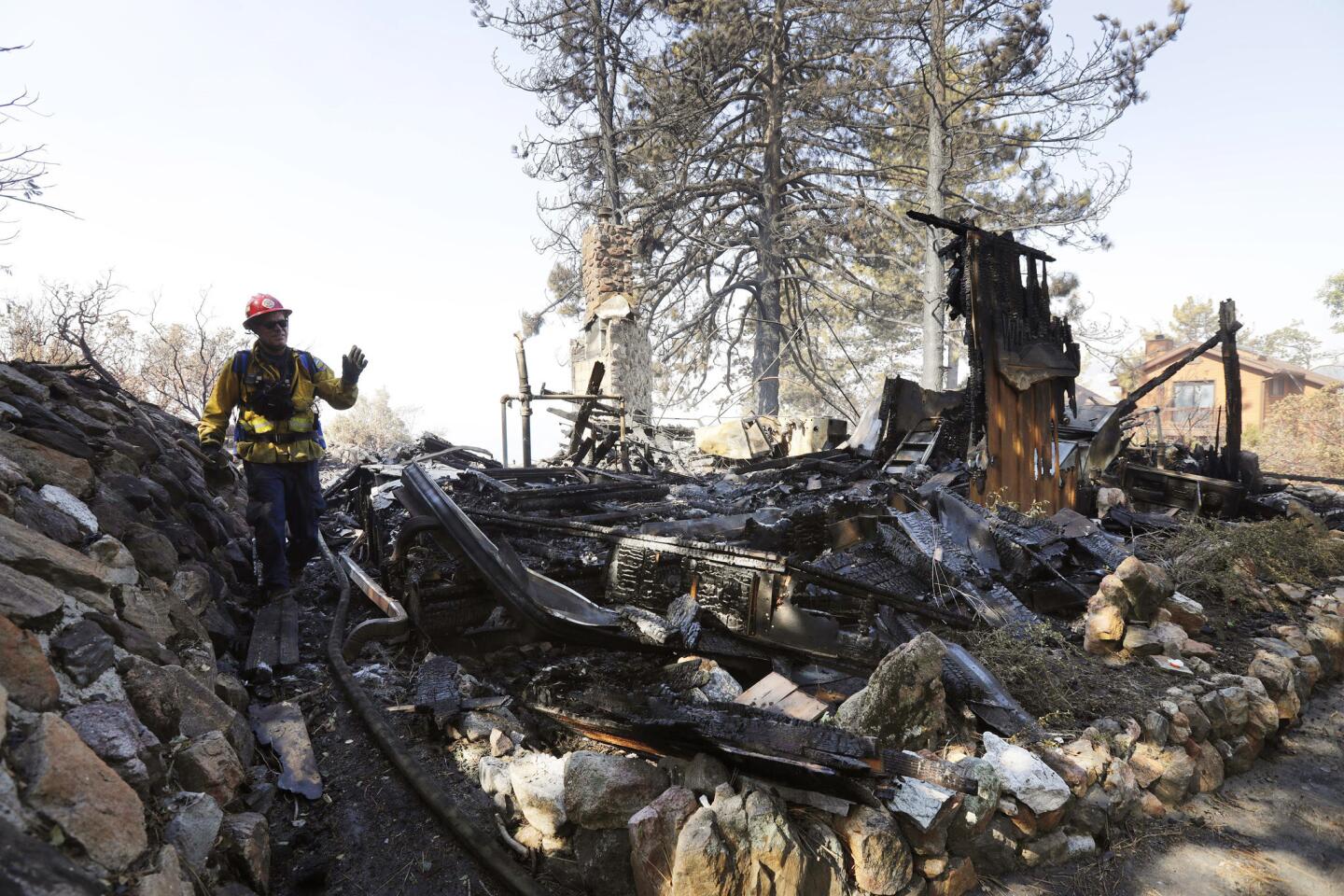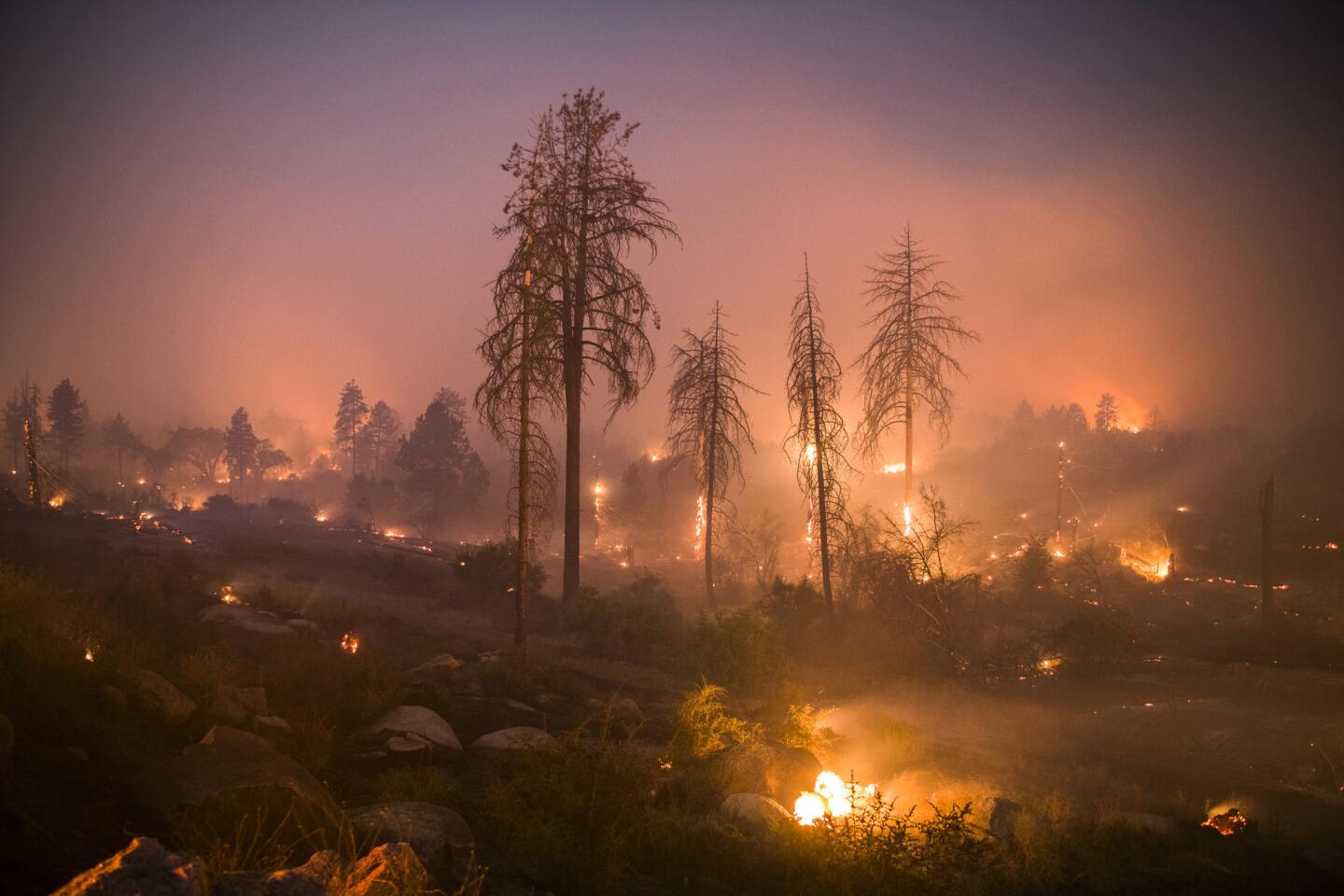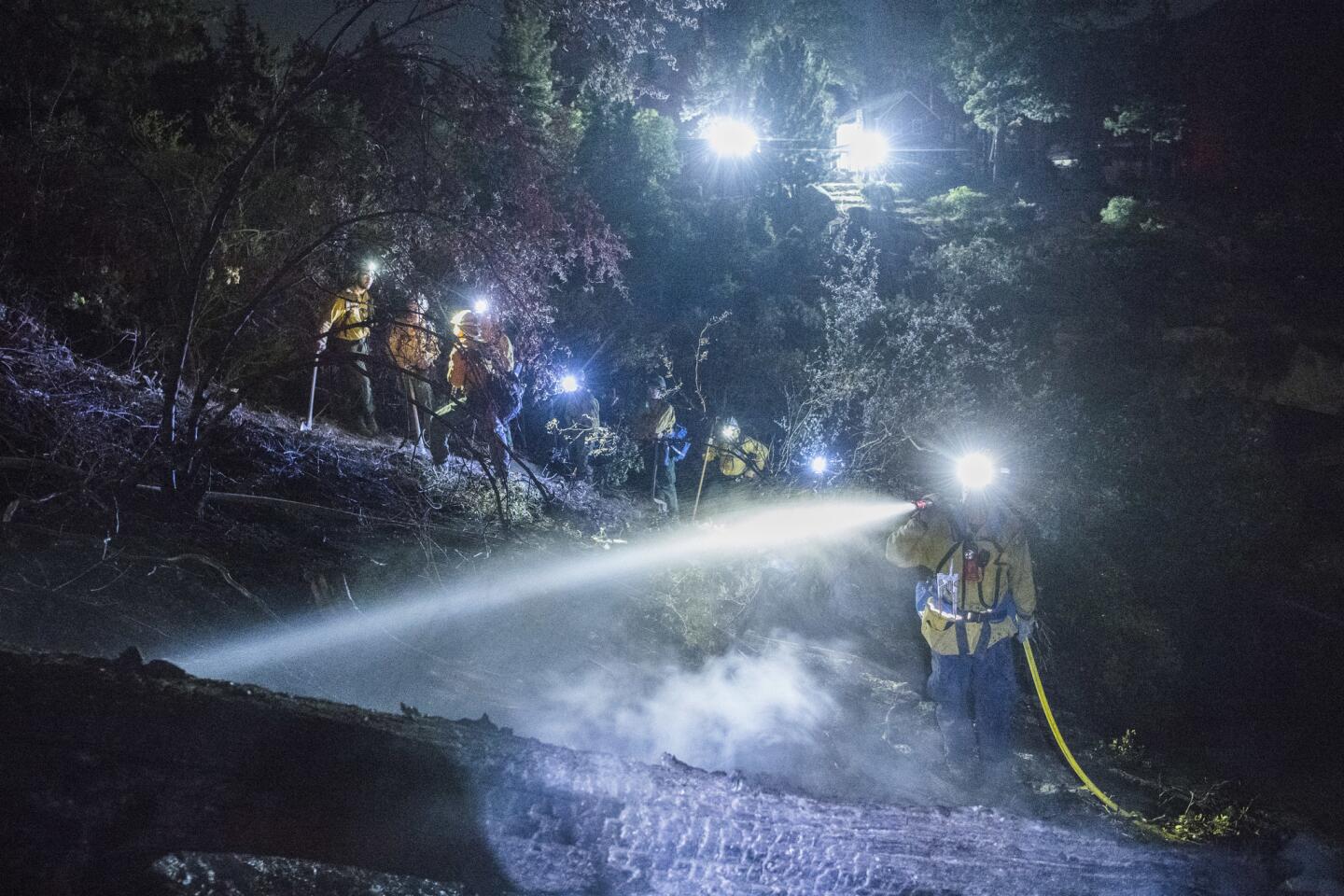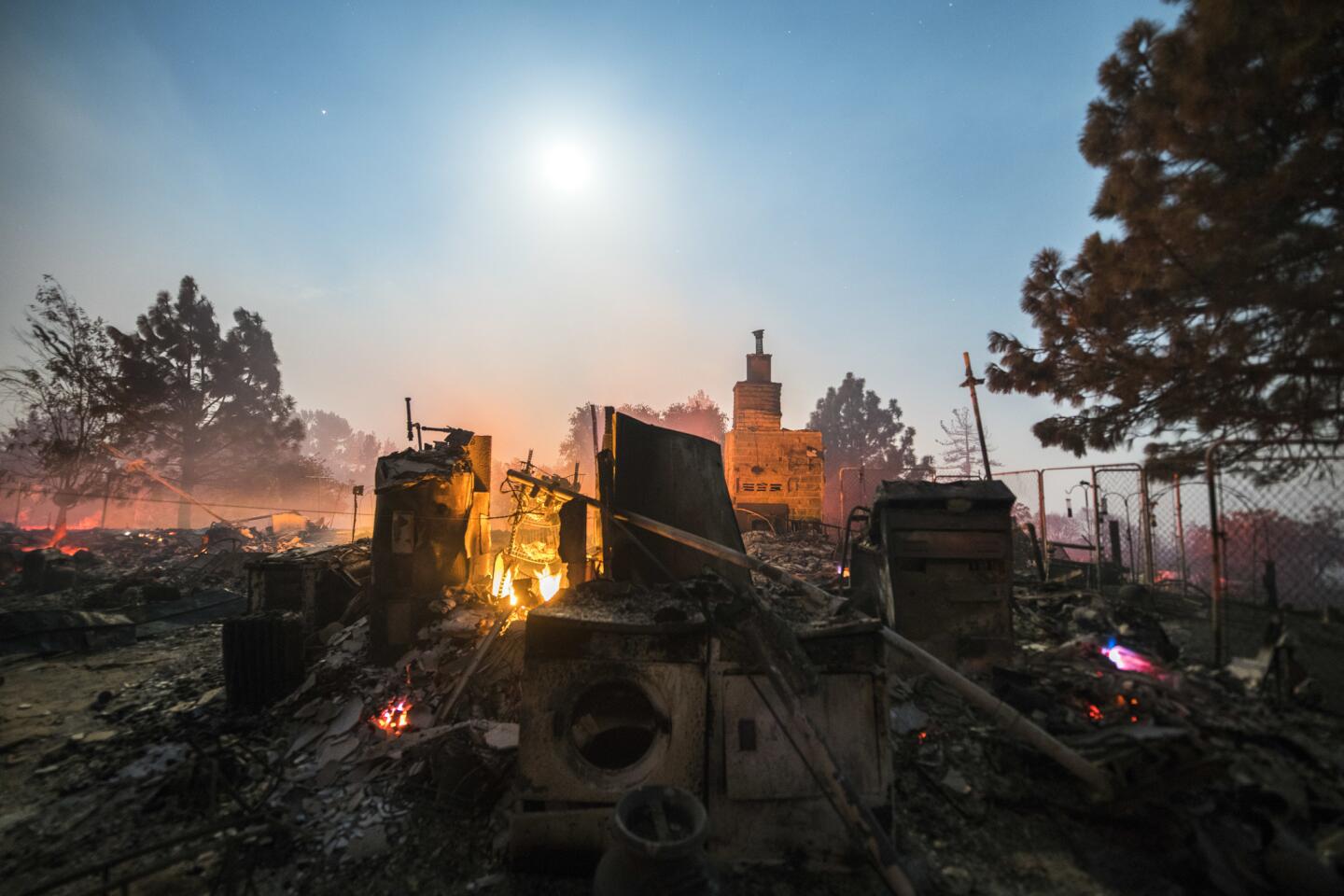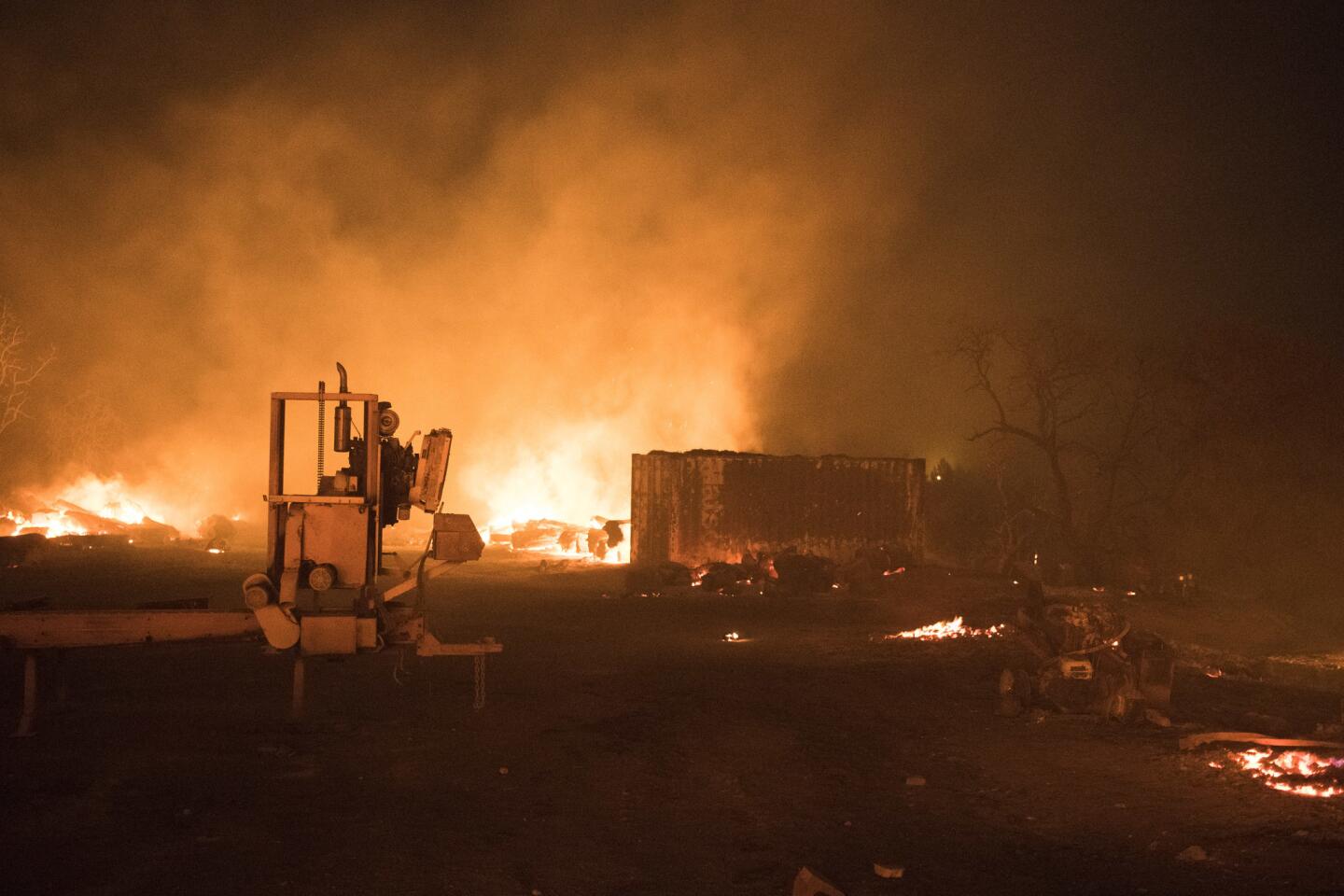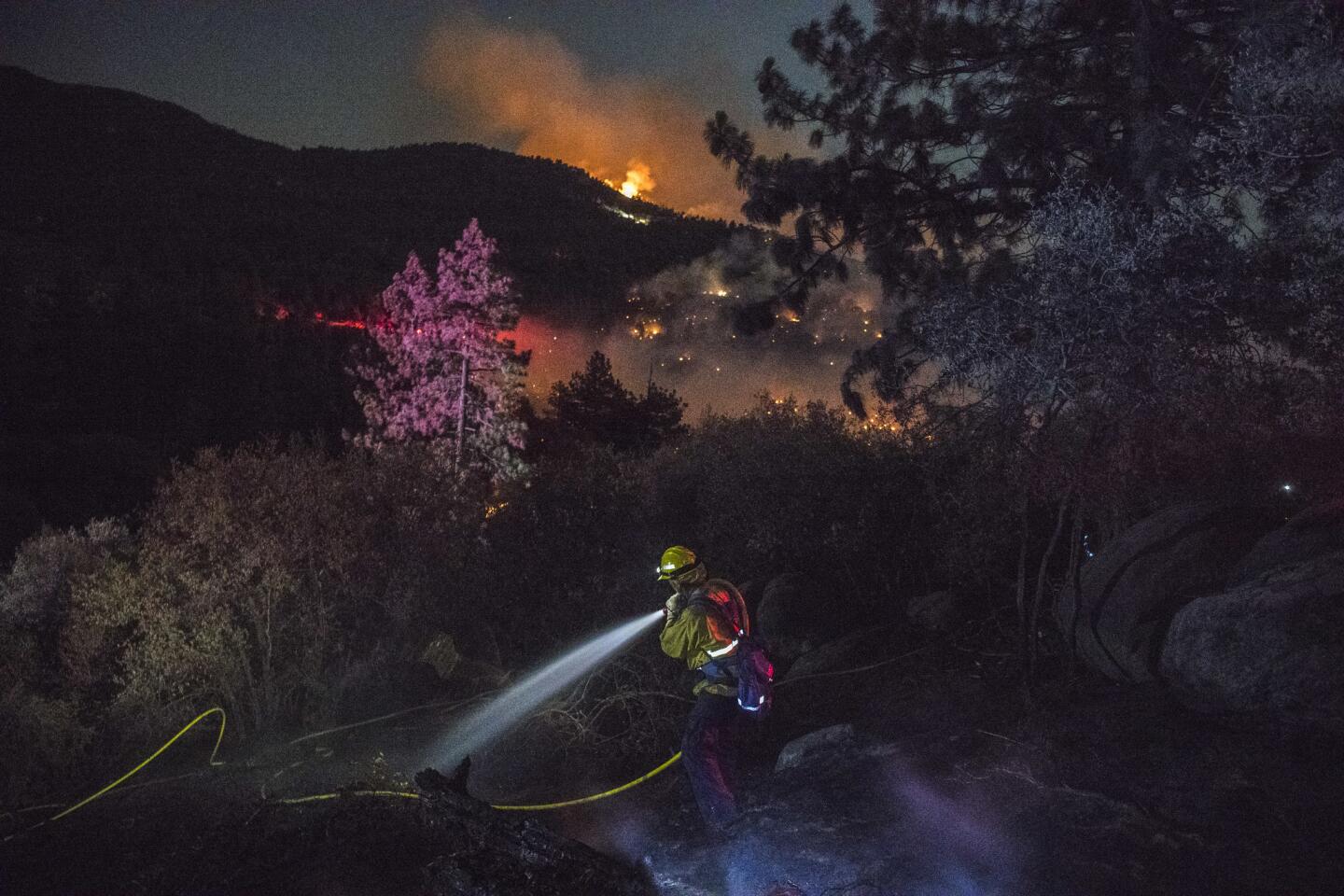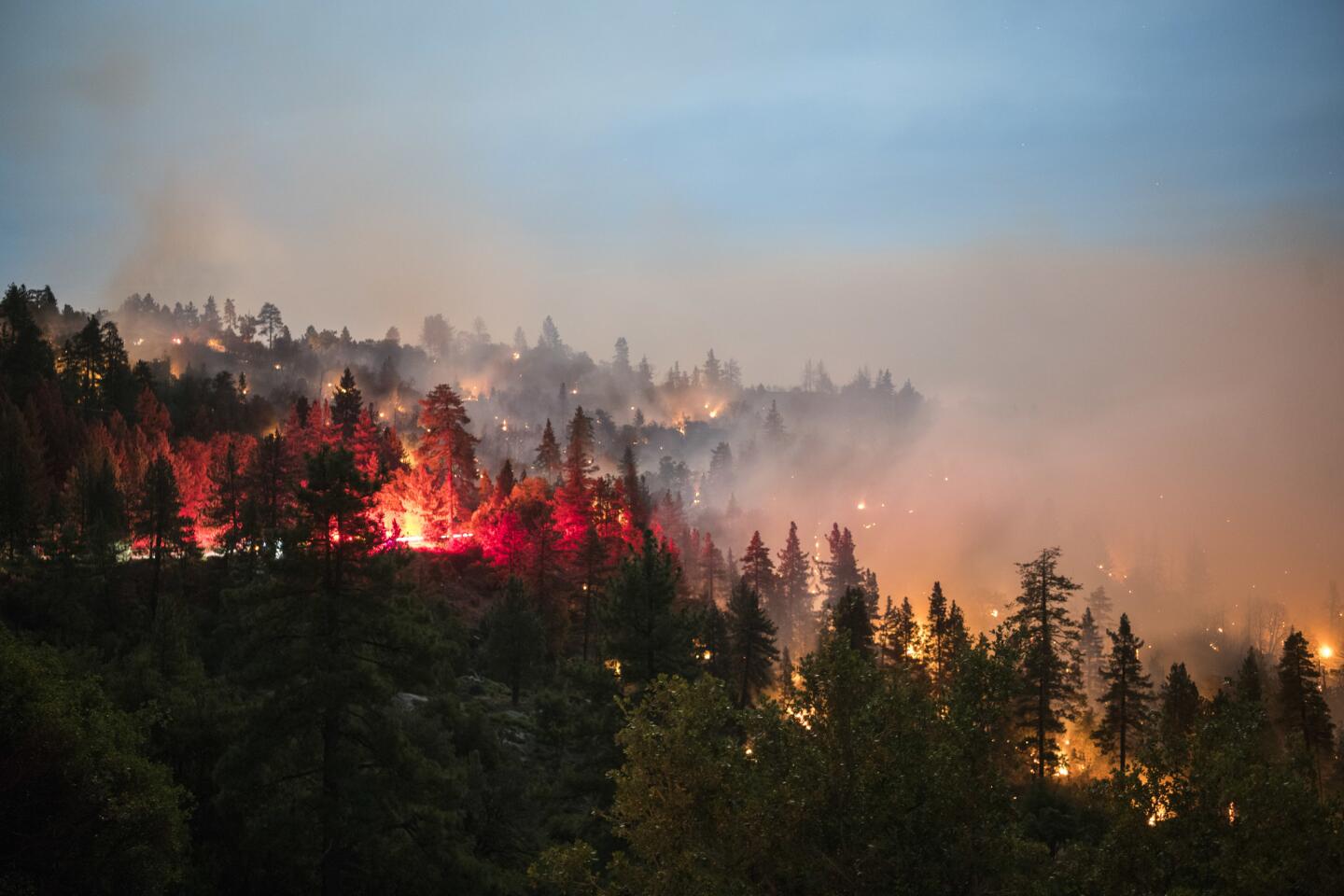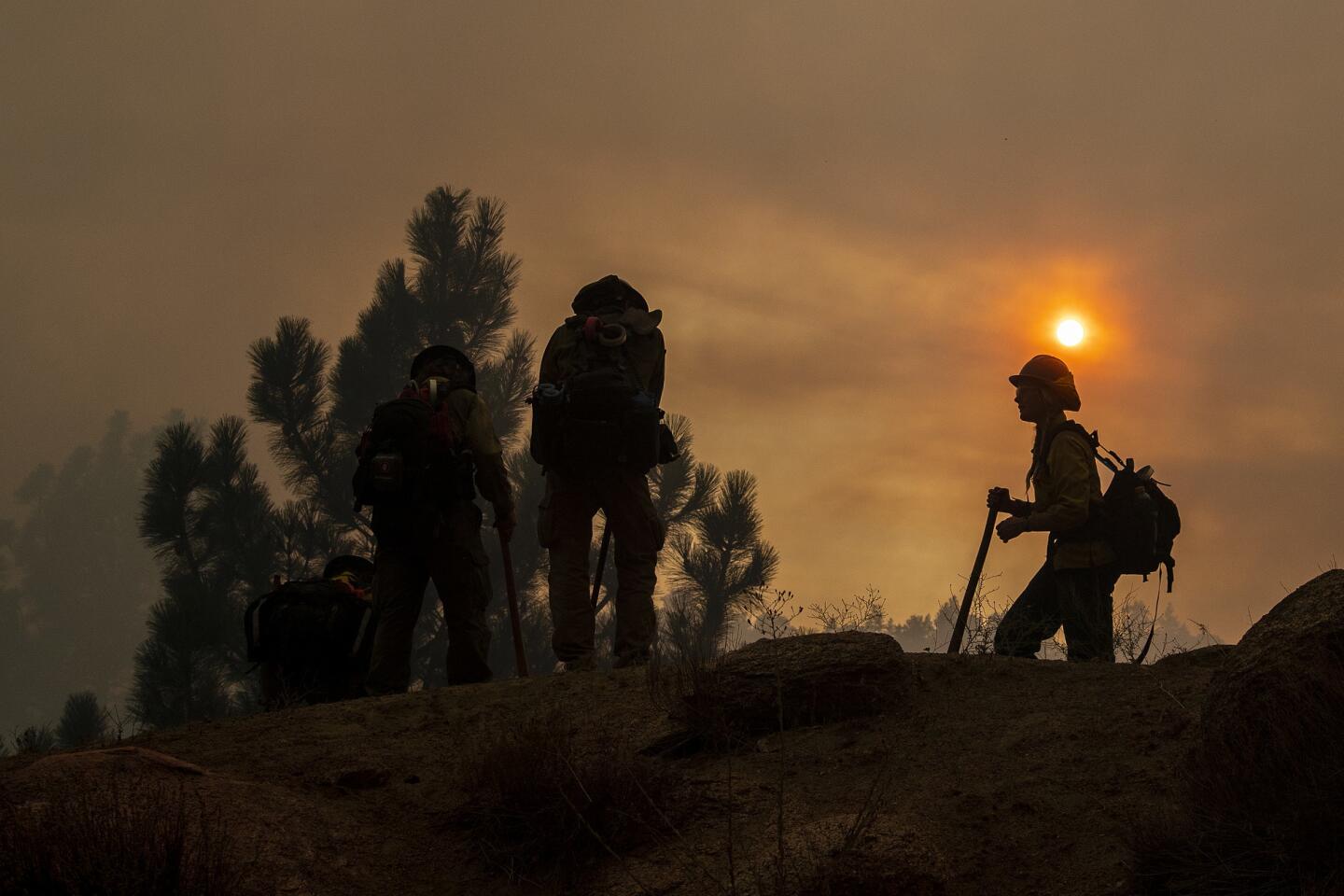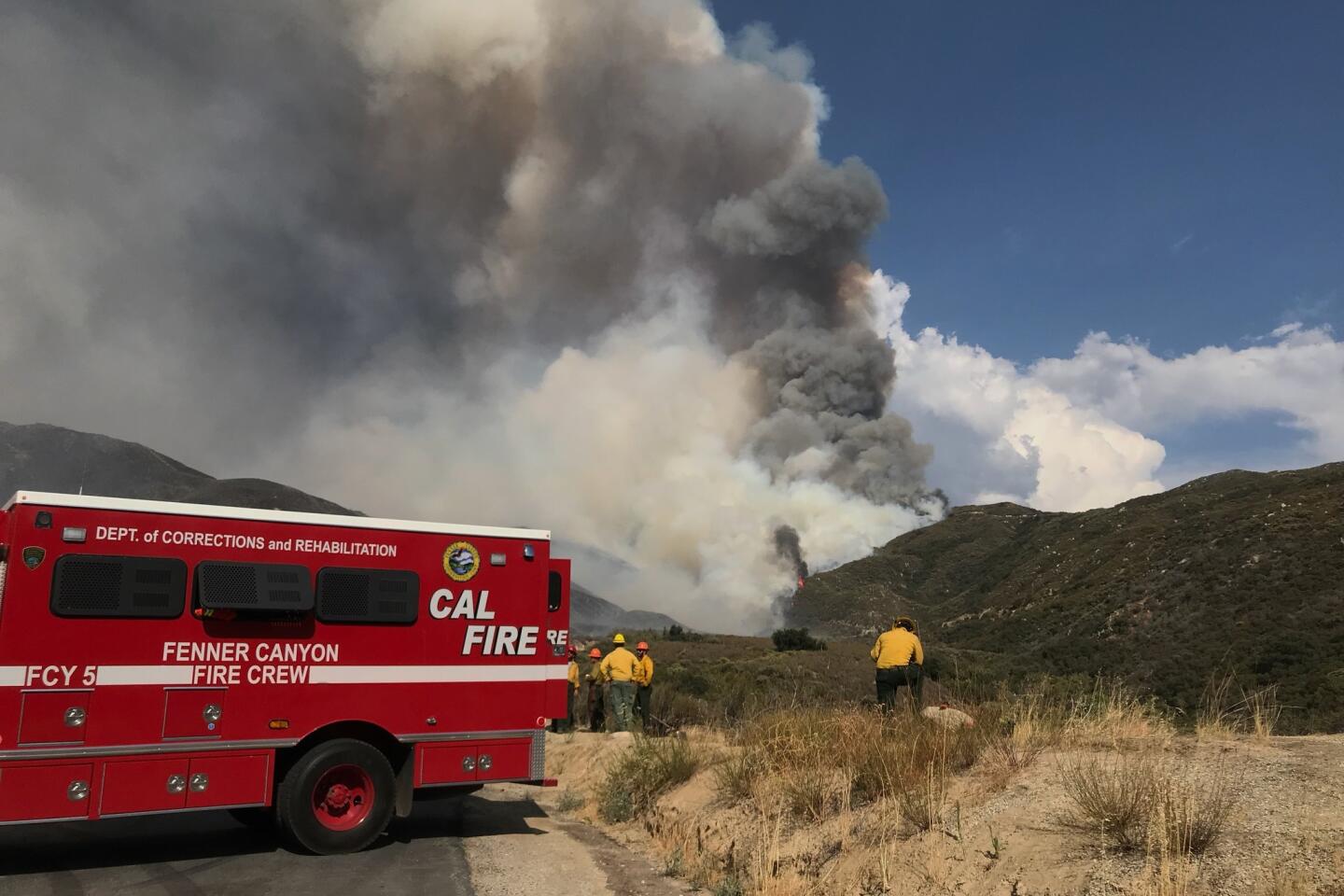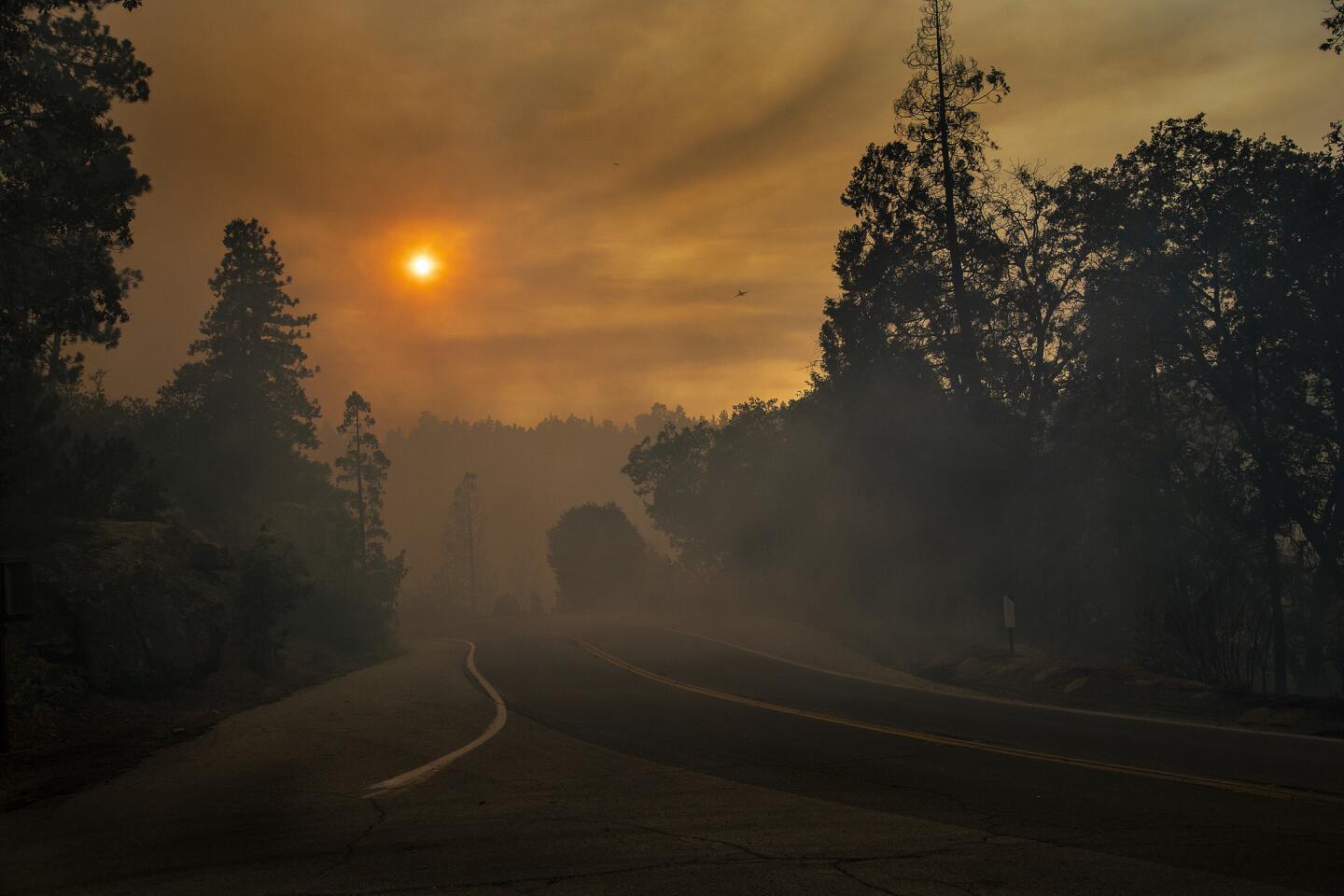Firefighters begin new attack on massive Cranston fire: ‘We’re throwing everything we can at it’

Firefighters mount aggressive attack against the 4,700-acre Cranston fire.
- Share via
Reporting from BANNING, Calif. — Joe Achtner was unloading tools from his truck about noon Wednesday when he noticed the sky above his Idyllwild home getting dark and flakes of ash falling around him.
Concerned, he drove down the street, where he saw a massive wildfire cresting a nearby hillside, threatening homes in his neighborhood of 30 years. The Cranston fire had charred 4,700 acres in the mountains south of Idyllwild. Officials said late Wednesday it was 5% contained.
“It came up on us really, really quickly. Within a half hour, the whole town was overwhelmed with flames,” said Achtner, a 65-year-old carpenter. “All of a sudden, it was right there — and it was huge.”
By the time he and his family loaded up their trucks with their three dogs and suitcases full of clothes, Riverside County sheriff’s deputies had swarmed the area. They ordered 2,174 homes evacuated in the mountain communities of Idyllwild, Apple Canyon, Lake Hemet, Mountain Center and Hurkey Creek while firefighters mounted an aggressive attack against flames.
“We’re throwing everything we can at it,” said Lee Beyer, a spokesman for the U.S. Forest Service. More than 700 firefighters were battling the blaze, with several helicopters dumping flame retardant and water.
The Cranston fire broke out during a blistering heat wave and spread rapidly, sending a massive tower of smoke over the San Jacinto Mountains. The blaze, which was at 5% containment at 10:15 p.m., destroyed five residential structures and threatened hundreds of others.
Authorities said an arsonist set multiple fires Wednesday in southwest Riverside County, including the Cranston fire. Brandon N. McGlover, 32, of Temecula was arrested on suspicion of five counts of arson to wild land, according to the U.S. Forest Service. The fires burned in southwest Riverside County and on federal land along State Highway 74 in the San Bernardino National Forest.
“I just pray for the town. We live in a beautiful town,” Achtner said.“The whole town is the trees and the town is the people and it’s all jeopardized right now.”
Much farther to the north, the deadly Ferguson fire continued to rage about two miles away from Yosemite National Park, growing to more than 43,000 acres late Wednesday as firefighters achieved 26% containment.
Visitors were given until noon Wednesday to evacuate Yosemite Valley, the heart of the 1,200-square-mile park. Officials have also closed Highway 41, the north-south artery that carries travelers from Southern California to Yosemite, and Glacier Point Road.
A stream of cars, campers and trailers flowed out of the park Wednesday morning as the blaze inched closer. Heavy smoke has blanketed the valley and created air quality conditions worse than in Beijing, China’s heavily polluted capital, said Yosemite spokesman Scott Gediman.
“With this hot, dry weather pattern, you just got the smoke sitting here,” he said. “The air quality fluctuates throughout the day but it’s really poor midday.”
Officials have handed out high-grade filtration masks and set up “clean air” centers around the park where employees and visitors can get a break from the smoke-filled air, Gediman said. Still, after days in the smoke, he said his voice has become raspy and he feels a dryness in his throat.
The scorching weather comes courtesy of a “heat dome” that settled over the desert Southwest this week and has shifted gradually toward Southern California. Though the coasts have been relatively cooler than inland areas, humid conditions have helped equalize the misery.
Relief may be coming by the weekend, but this heat wave is an early sign of what’s to come: earlier, more frequent and more intense hot spells.
Typically heat waves reach their peak in September, said Bill Patzert, a climatologist who formerly worked for the Jet Propulsion Laboratory. But one this early and persistent is indicative of a warmer, more dangerous future for Los Angeles and the country, he said.
The weather will be more comfortable, though still humid, this weekend as temperatures are expected to drop into the high 80s through next week, said National Weather Service meteorologist Keily Delerme.
“It’s not unusual for it to be hot in July, because it’s the summer,” she said. “What makes it potentially dangerous is that we don’t have those cooling temperatures at night. If you have lower temperatures in the 70s, the next day, it’s not going to take a lot for the temperatures to rise, because it’ll already be warm and the air heats up faster.”
Those hotter nighttime temperatures might also be due to Los Angeles’ rapid growth into an “urban heat island,” with infrastructure absorbing heat longer. That makes cities significantly warmer than they have been in the past, Patzert said.
“We’ve built this great megalopolis — more than a metropolis — and all this infrastructure that we’ve built creates its own heat,” he said.
Daytime high temperatures in July, August and September are about 6 to 8 degrees warmer than they were 100 years ago. And that’s on top of global warming, Patzert said.
Of all meteorological phenomena, such as hurricanes and tornadoes, the far more common heat wave is the deadliest. It disproportionately affects the poor, the very young and the elderly, he said.
“The thing that’s really saved us from this increase in the number, duration and timing of heat waves is the greatest invention of the 20th century — the air conditioner,” Patzert said. Air conditioning has become a commodity, he said, though not one that everyone can afford.
Patzert said he believes the heat will return next week after a short break. The “heat dome” that shifted its center to cover Southern California and caused this heat wave will probably return to its home in Las Vegas and Arizona but wobble back and forth.
“Bottom line is, we’re going to have to deal with it,” he said.
And it wouldn’t hurt to encourage the next generation to build careers in the booming air-conditioning business, he added.
“Send your kids to college, it’s debt forever,” Patzert said. “Enroll them in air-conditioning school and they are guaranteed lifetime employment.”
UPDATES:
8 a.m: This article was updated with new fire numbers.
7 a.m.: This article was updated with the latest containment and acreage figures for the Cranston and Ferguson fires.
This article was originally published at 4 a.m.
More to Read
Sign up for Essential California
The most important California stories and recommendations in your inbox every morning.
You may occasionally receive promotional content from the Los Angeles Times.
